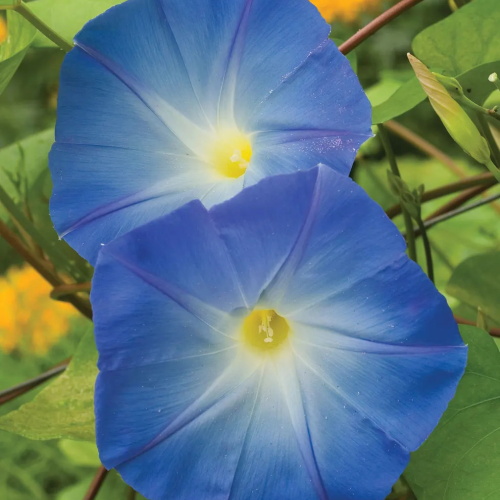What is your birth month flower? Discover why these blooms are meaningful – plus tips from gardening experts on how to grow them in your yard
Growing your own birth month flower is a beautiful way to add a personal touch to your garden
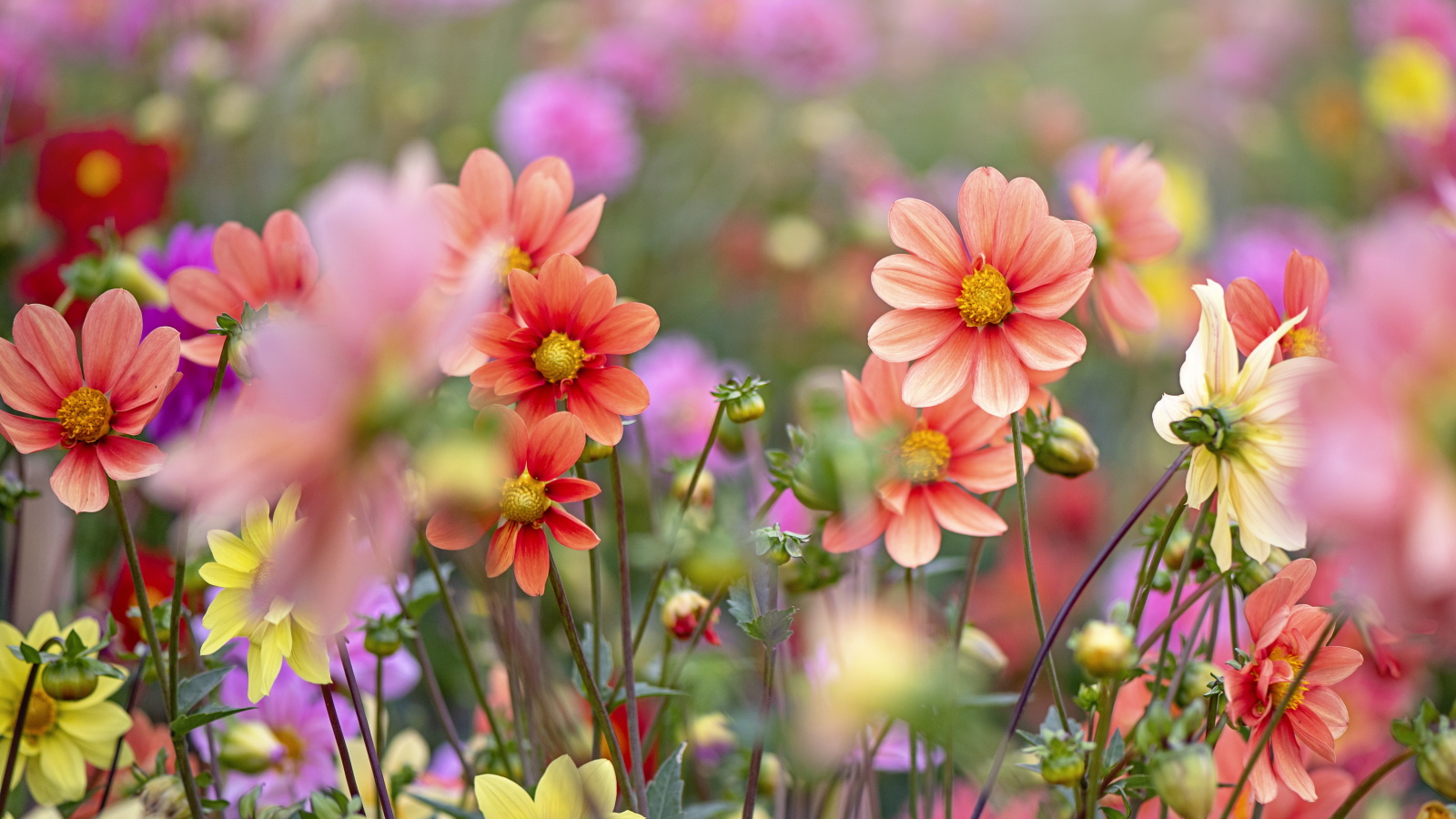
- What are birth month flowers?
- January: Carnation and snowdrop
- February: Iris and violet
- March: Jonquil and daffodil
- April: Daisy and sweet pea
- May: Lily of the valley and hawthorn
- June: Honeysuckle and rose
- July: Larkspur and waterlily
- August: Poppy and gladiolus
- September: Aster and morning glory
- October: Cosmos and marigold
- November: Chrysanthemum and peony
- December: Holly and narcissus
- FAQs

Flowers have long been symbolic of different emotions, ceremonies, relationships, and stages of life. Many of us have a favorite flower our loved ones associate us with or a selection of flowers we sow in our yards every year because they bring us so much joy.
Birth month flowers are no different and many see them as being just as special as those floral staples - they're representative of us and make for wonderful gifts. Just like birth stones, each month of the year has a birth flower, or rather birth flowers as there are two for each month.
Growing your own birth month flower in your yard is a beautiful, subtle way to make your mark on your garden. It's also a lovely addition to have in a memory garden of loved ones you may have lost. Perhaps you're just looking for a unique touch for your flower beds with a bloom to represent each month of the year. Whatever the case, we've outlined the birth month flowers right here with tips and insights from flower growing experts on how to grow them successfully.
What are birth month flowers?
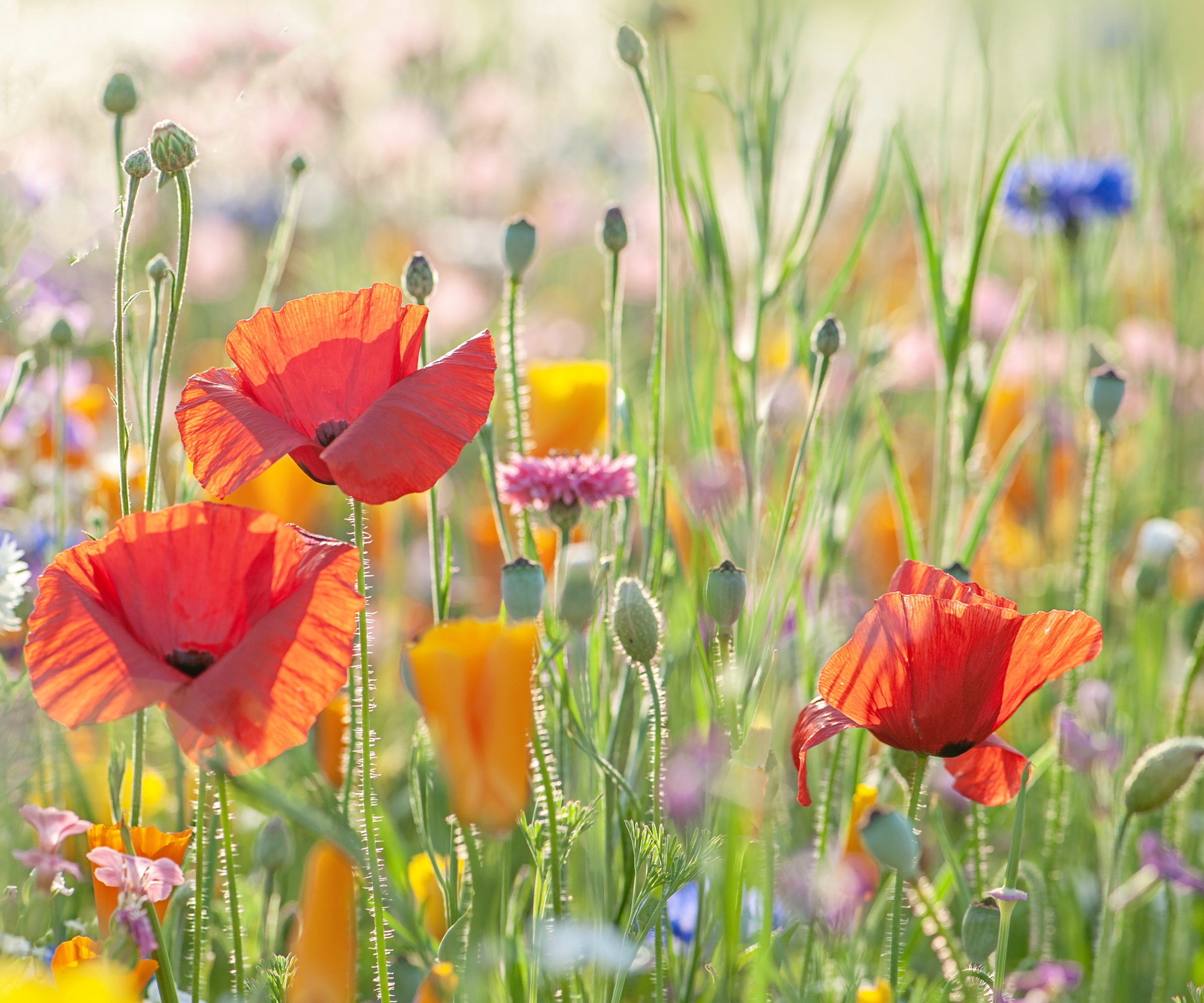
The history of birth month flowers is actually a little uncertain. Some sources suggest the tradition of birth month flowers dates back to ancient Roman times. Much like zodiac signs, they're now popular symbols of personalization. This makes them great cut flowers for a home decorated according to your zodiac sign, or they can be used to enhance the ethereal feel of fairy gardens and moon gardens. The birth month flowers are:
- January: Carnation and snowdrop
- February: Iris and violet
- March: Jonquil and daffodil
- April: Daisy and sweet pea
- May: Lily of the valley and hawthorn
- June: Honeysuckle and rose
- July: Larkspur and waterlily
- August: Poppy and gladiolus
- September: Aster and morning glory
- October: Cosmos and marigold
- November: Chrysanthemum and peony
- December: Holly and narcissus
How to grow your own birth month flowers
Just like planning a cut flower garden, you need to determine a few factors before jumping in and growing birth month flowers. For example, not all of the birth month flowers will grow well across every US hardiness zone. Likewise, different flowers will need to be planted at different times of year. That being said, here are our expert tips for growing birth month flowers:
January: Carnation and snowdrop
Carnations are classic springtime flowers. They're perfect for cottage garden styles and can be grown either annuals or perennials.
Snowdrops are just as impressive. There are so many types of snowdrops to grow, offering lots of choice for a range of backyard aesthetics. They're brilliant as winter flowers for pots and they're often the perennials associated with the first sign of spring.
Tips for growing carnations
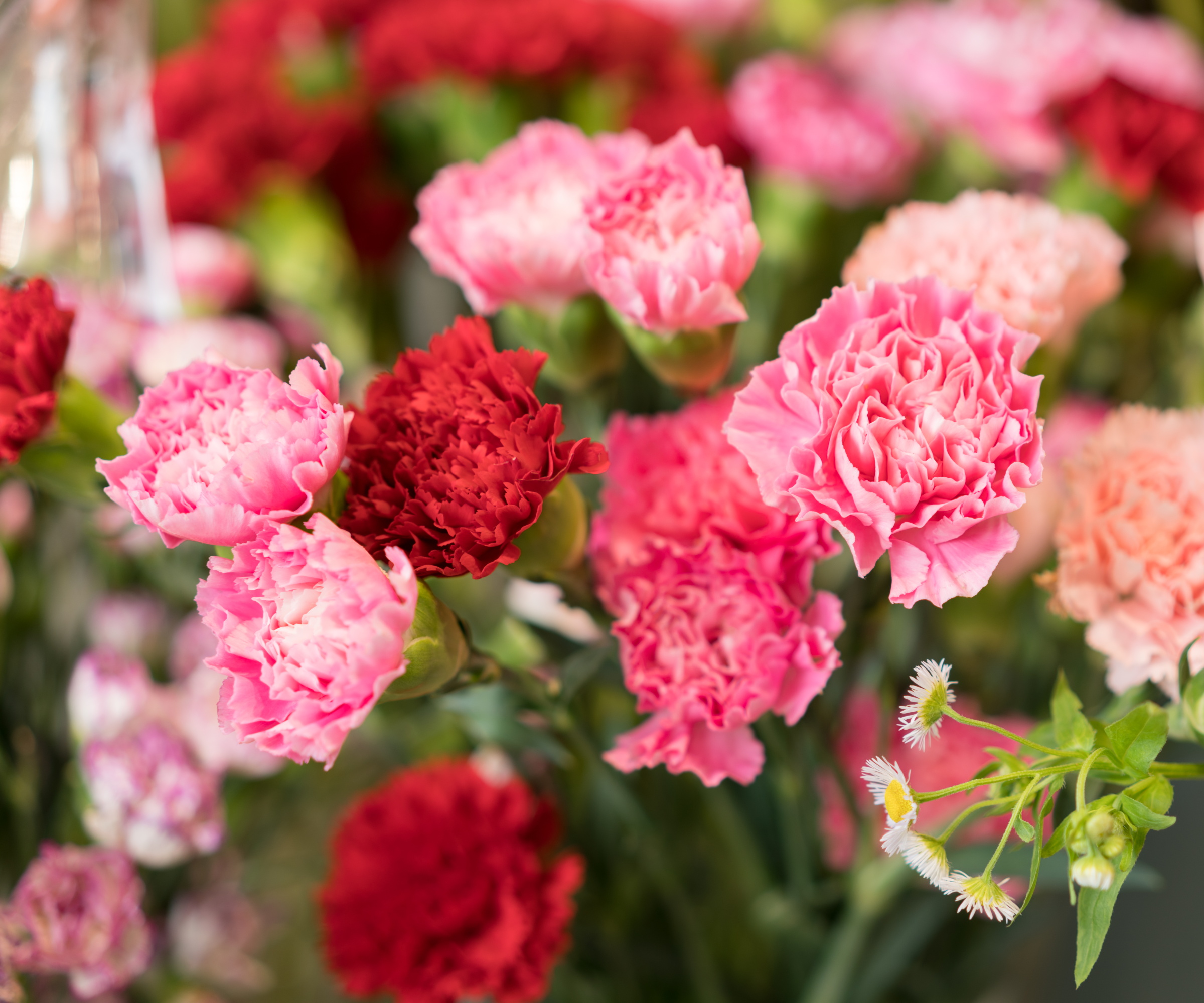
- US hardiness zone: Zone 5 to zone 10
- Flowers in: Late spring to summer
- Plant in: Sow seeds indoors in spring around two months before the last frost, or sow seeds outdoors in late summer.
- Position: Full sun to partial shade. Make sure to use well-draining soil, like this potting mix for flowers from Amazon.
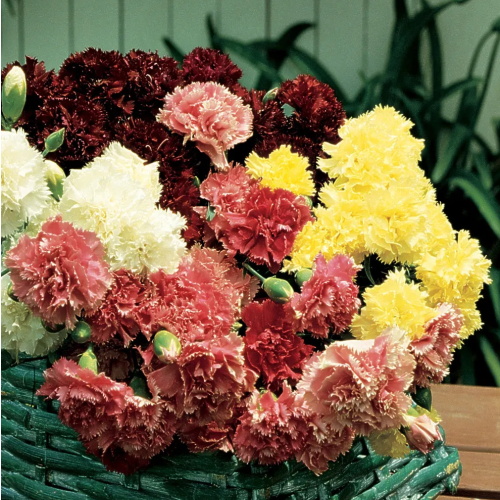
150 seeds of beautifully fringed, fully double carnation flowers in a wide range of colors.
Tips for growing snowdrops
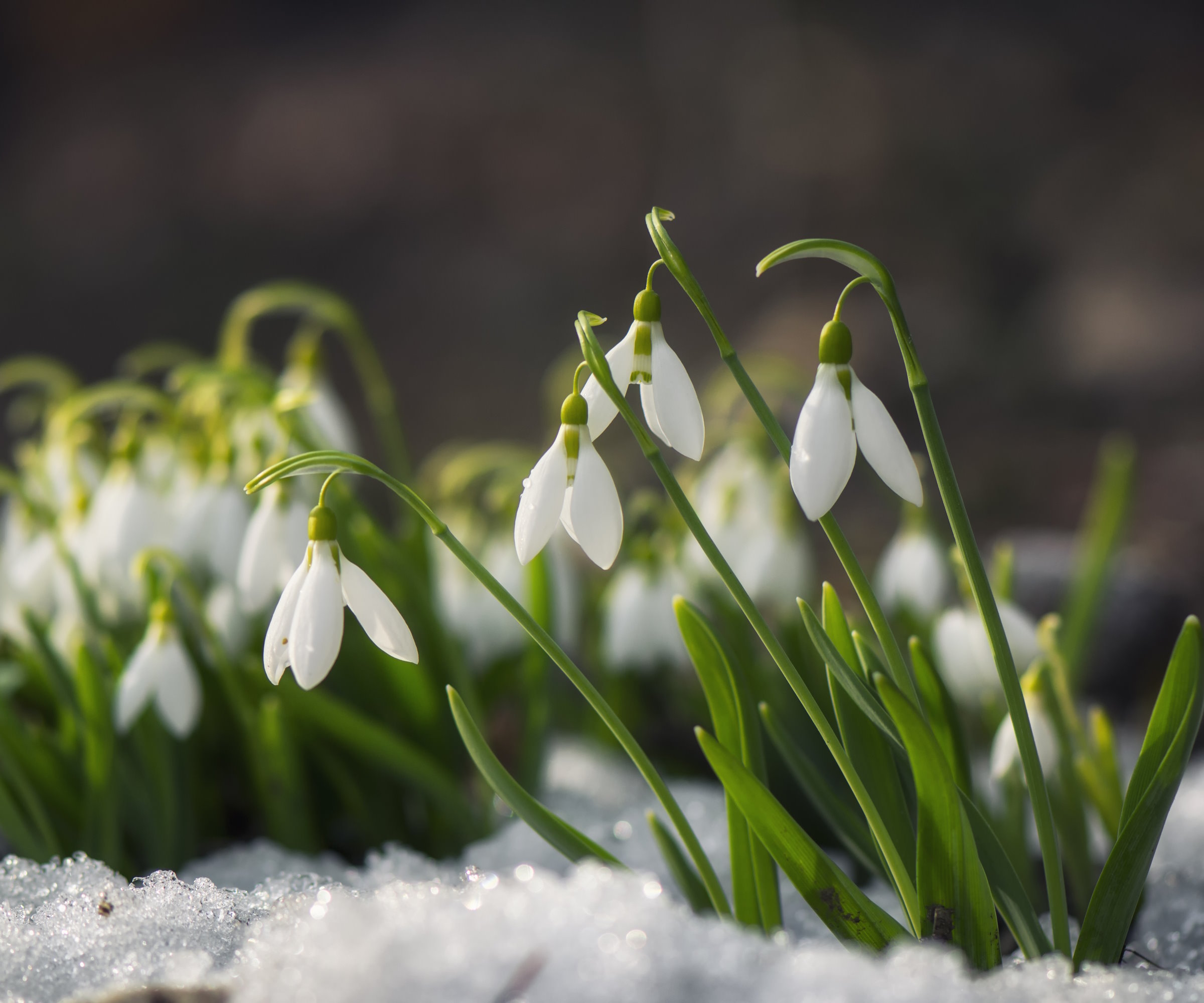
- US hardiness zone: Zone 3 to zone 7
- Flowers in: Mid winter to early spring
- Plant in: Plant snowdrop bulbs between August and November, or plant snowdrops 'in the green' in spring once blooms have faded.
- Position: Partial shade in moist, well-drained soil. They're ideal as ground cover plants for shade, brightening up the ground beneath trees in your yard.
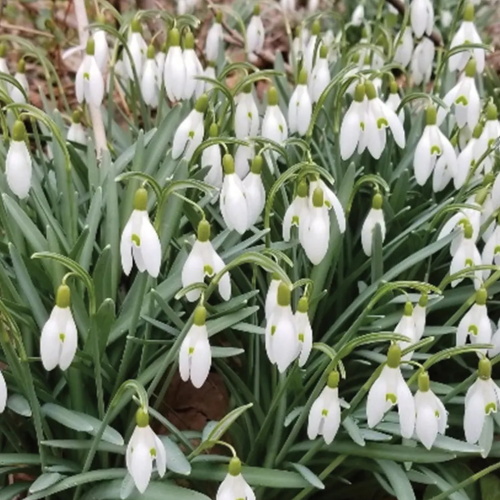
Plant these 25 snowdrop bulbs to be rewarded with a stunning sight of the first flowers of the year.
February: Iris and violet
Whether you opt for one of the best bearded iris varieties or the best non-bearded iris varieties, these are stunning perennial plants that will return year-on-year with their elegant petals.
Likewise, violets are versatile perennials that can be used in container gardens or borders. 'Depending on your hardiness zone, they are great candidates for succession planting to keep flowers year-round,' says Christen Waddell, gardening expert at Blackberry Farm. 'After they have gotten established, pluck the flower heads daily to encourage the plants to grow and spread out,' she advises.
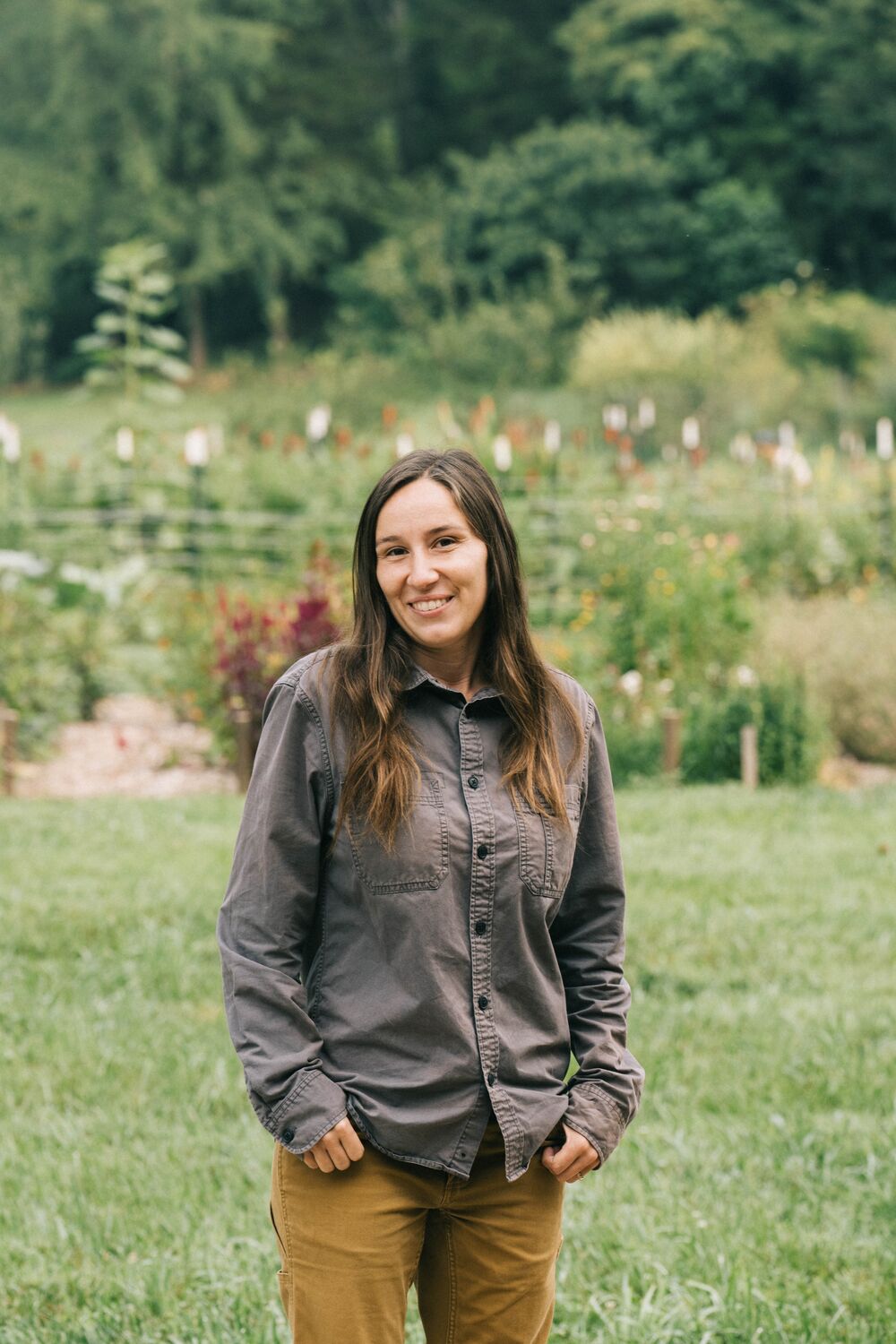
Christen oversees Blackberry Farm's Garden team, which provides renowned farm-to-table Appalachian cuisine to guests straight from the on-property garden. Scraps from the restaurants are then composted to replenish the Garden's soil.
Tips for growing irises
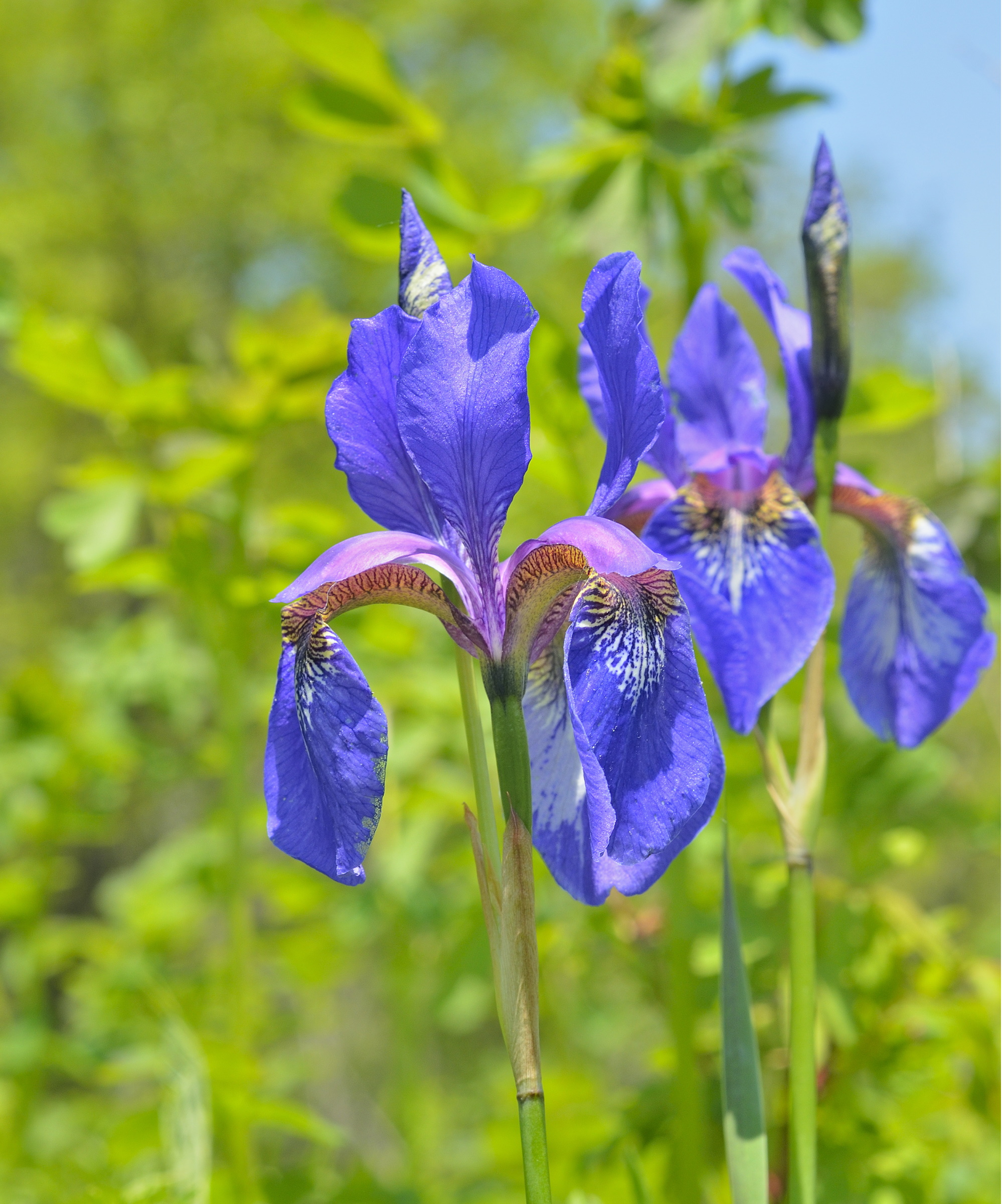
- US hardiness zone: Zone 3 to zone 9
- Flowers in: Early spring to summer
- Plant in: Grow irises by planting bulbs between September and November.
- Position: Full-sun in well-drained soil. Some varieties tolerate partial shade, and you should opt for a sheltered position to protect their tall stems from wind damage.
Discover the iris collection available at Nature Hills.
Tips for growing violets
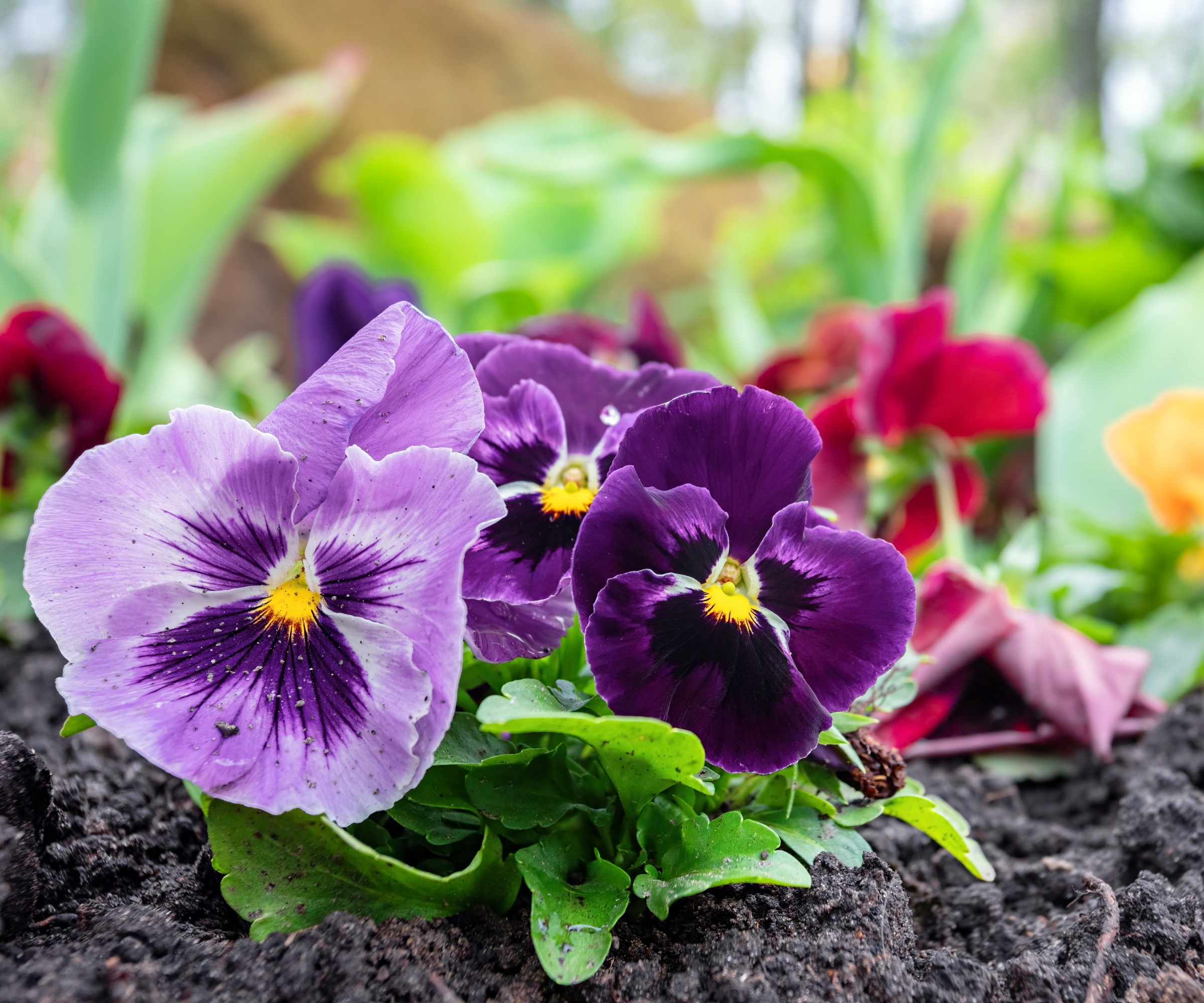
- US hardiness zone: Zone 3 to zone 9
- Flowers in: Spring
- Plant in: Grow violas by sowing violet seeds in early spring indoors or in a cold frame. If you're growing a species that needs a period of cold for seed stratification, sow seeds in fall in a sheltered spot.
- Position: Partial shade in damp soil with good drainage. These flowers are perfect as woodland plants and work well in garden shade areas.
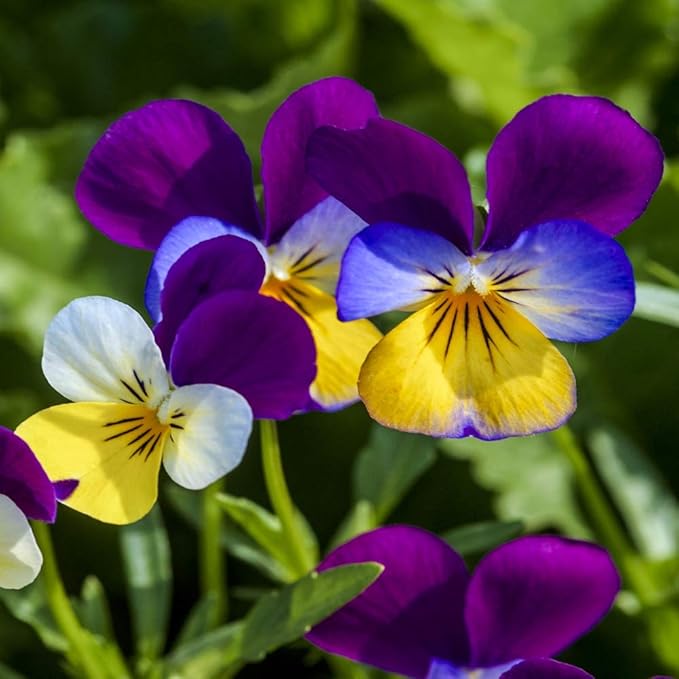
Johnny jumps ups are a yellow-purple perennial. It is a low-growing wildflower seed for planting in USDA zones 3-9.
March: Jonquil and daffodil
Although they look similar, due to both belonging to the narcissus genus, jonquil and daffodil are actually two different perennials with slightly different care needs.
Jonquil comes in shades of yellow and white, and is most loved for its sweet scent. It's a valuable addition to fragrant gardens for this reason. Typically, jonquils are smaller than daffodils.
With a similar appearance, but arguably showier blooms, daffodils are some of the most classic varieties of narcissi bulbs to grow. There are also plenty of plants that complement daffodils to choose from when planting these flowers in your yard. Just remember to deadhead daffodils to encourage new blooms.
There are plenty of jonquil and daffodil bulbs available at Burpee.
Tips for growing jonquils
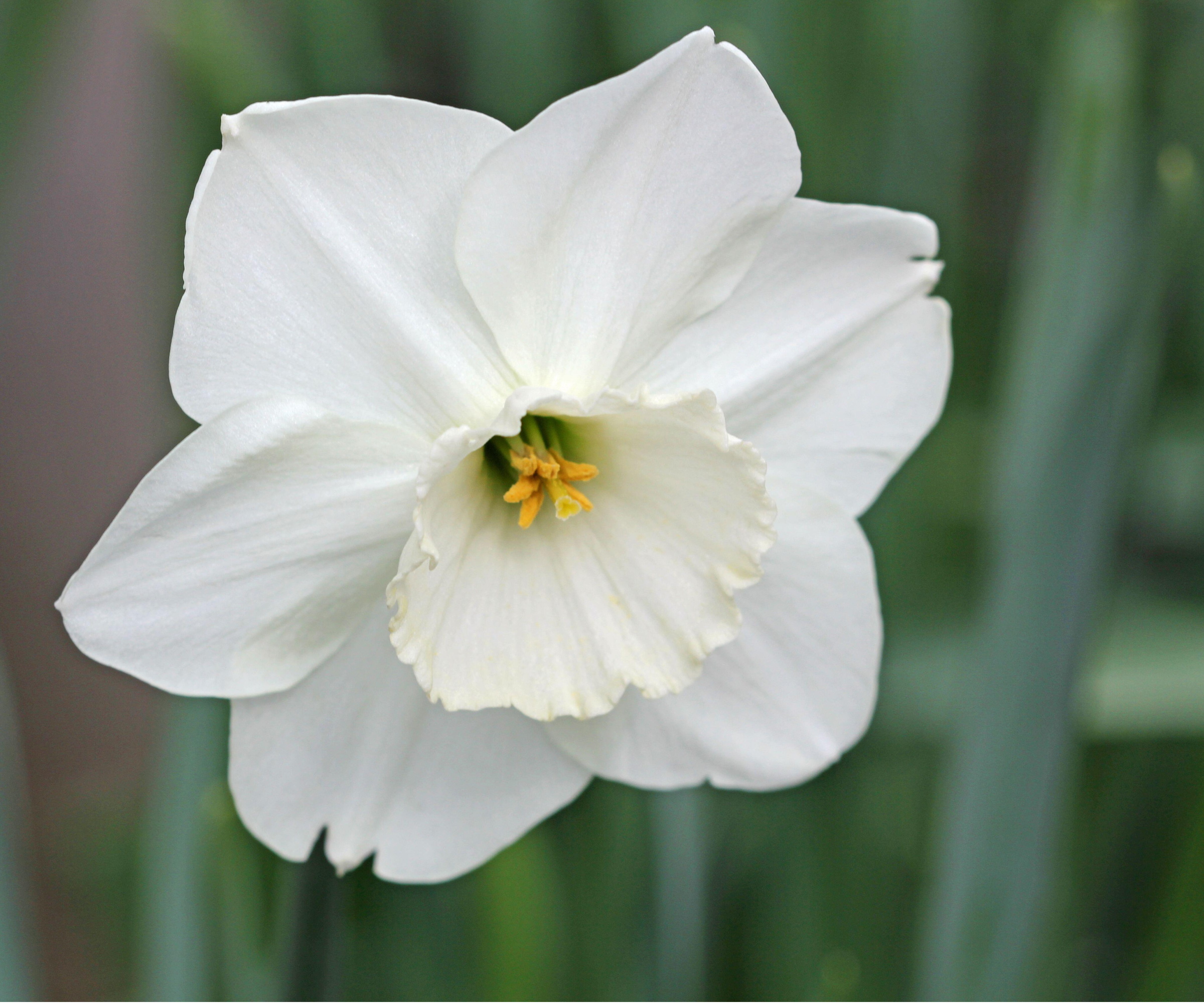
- US hardiness zone: Zone 4 to zone 9
- Flowers in: Late winter to spring
- Plant in: Plant bulbs in fall when the ground has started to cool.
- Position: Full sun to partial shade. It's best to plant in well-draining, fertile soil in pots or the ground.
Tips for growing daffodils

- US hardiness zone: Zone 3 to zone 9
- Flowers in: Late winter to spring
- Plant in: Plant daffodil bulbs in fall when the ground has cooled down.
- Position: Full sun in fertile, well-draining soil. Many gardeners enjoy planting daffodil bulbs in lawns to add a pop of color.
April: Daisy and sweet pea
English daisies, or lawn daisies, are actually widely considered weeds, cropping up in lawns unexpectedly. However, there is no denying their white blooms are beautiful and bring a sense of nostalgia for those of us who made daisy chains in our childhood. There are also other types of daisy that offer bigger blooms - like gerbera daisies. Discover the range of daisies available at Nature Hills.
Meanwhile, annual sweet peas are some of the most fragrant flowers you can grow. 'With their seductive fragrance, sweet peas make great flowers for gardens,' says flower growing expert, says Lisa Fontanarosa. 'Despite their delicate look, sweet peas are quite hardy,' she adds. There are plenty of sweet pea varieties you can choose from and they can even be trained to climb a trellis.

Lisa is an entrepreneur who loves plants, with a styling business, lavender farm, apple orchard, and flower gardens, based in Albuquerque, New Mexico. She is an expert lavender grower with many years of organic growing experience.
Tips for growing English daisies
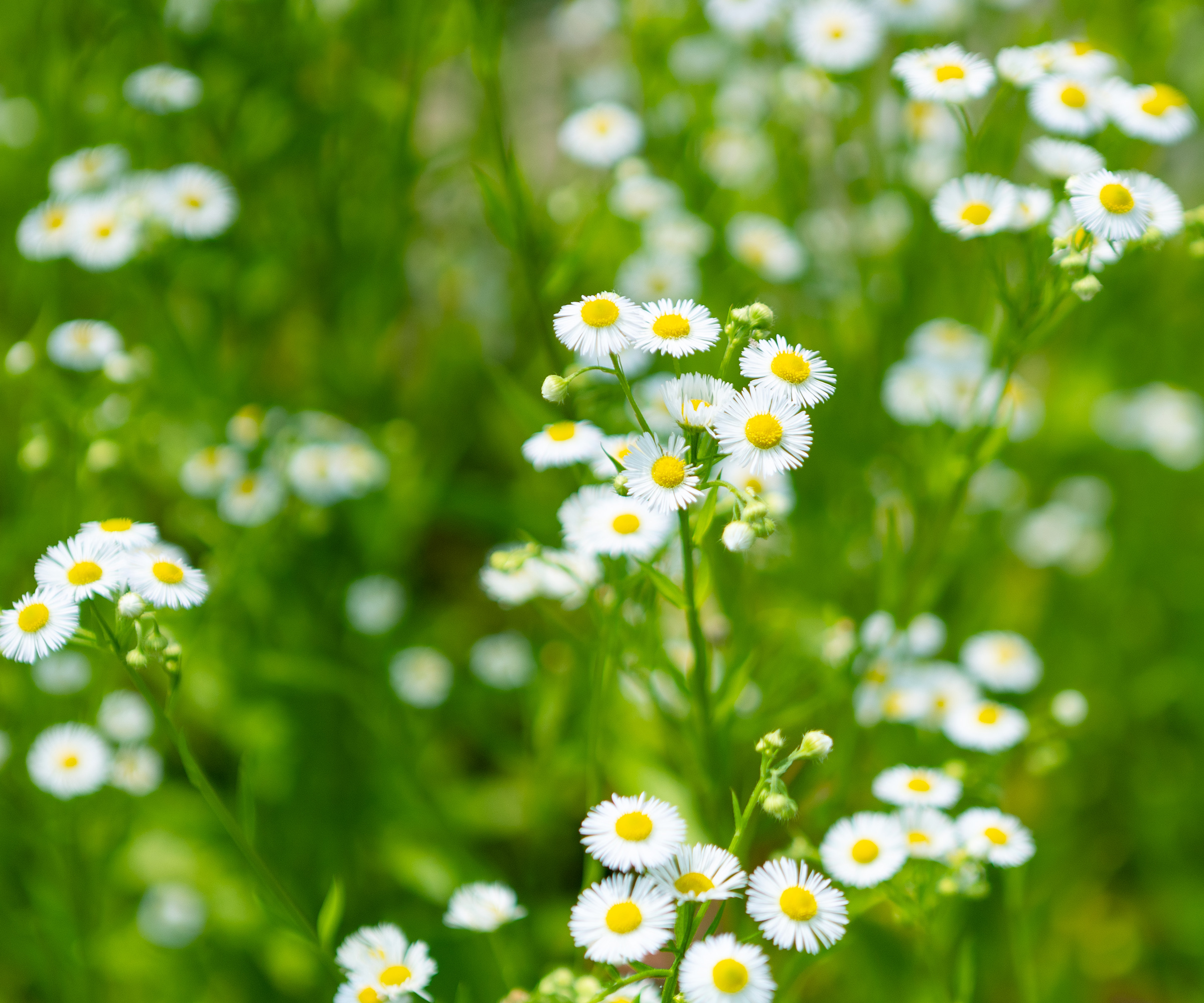
- US hardiness zone: Zone 4 to zone 10
- Flowers in: Spring to early fall
- Plant in: You can sow English daisies, or lawn daisies, directly on lawns in spring or fall.
- Position: Full sun to partial shade. These flowering weeds for pollinators self-seed, so you're likely to see them crop up elsewhere in your lawn and return next year.
Tips for growing sweet peas
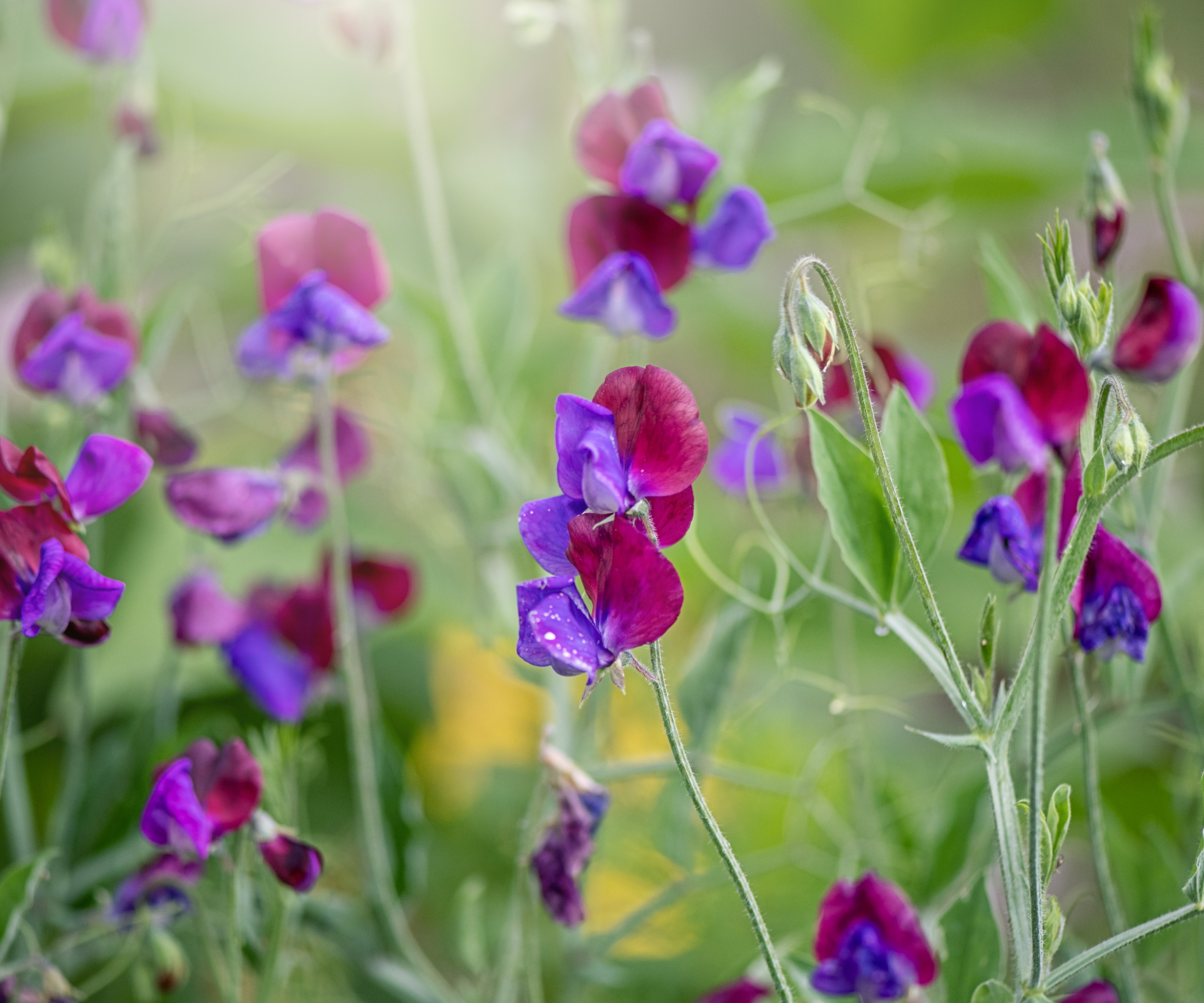
- US hardiness zone: Zone 3 to zone 8
- Flowers in: Summer
- Plant in: To grow sweet peas, sow seeds directly in the ground in cool weather during spring or fall. You can also sow them indoors and then plant them out in mid-spring.
- Position: Full sun. Sweet peas do best in a well-draining soil type that is moisture retentive, as they won't cope well with drying out completely.
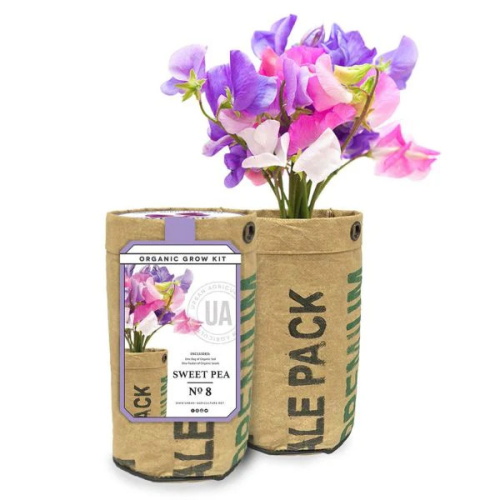
Perfect for gifting, this sweet pea grow kit has everything you need to grow your own fragrant blooms.
May: Lily of the valley and hawthorn
'I was delighted to find out my birth month flower is lily of the valley, Convallaria majalis, as these delicate, diminutive perennials are among my absolute favourite flowers,' says H&G's Head of Gardens, Rachel Bull. 'I don’t have to do anything to help them grow; they seem to have found their ideal spot. They may be tiny, but they are surprisingly resilient,' she adds.
Hawthorns are just as beautiful. They're often used as hedging plants, but are also popularly grown as flowering trees. See this White Indian Hawthorn Shrub at Fast-growing Trees.

Rachel is a gardening editor, flower grower and floral designer. Her journalism career began on Country Living magazine, sparking a love of container gardening and wild planting. After more than a decade writing for and editing a range of consumer, business and special interest titles, Rachel became editor of floral art magazine The Flower Arranger. She then trained and worked as a floral designer and stylist in London for six years, before joining the Homes & Gardens team.
Tips for growing lily of the valley
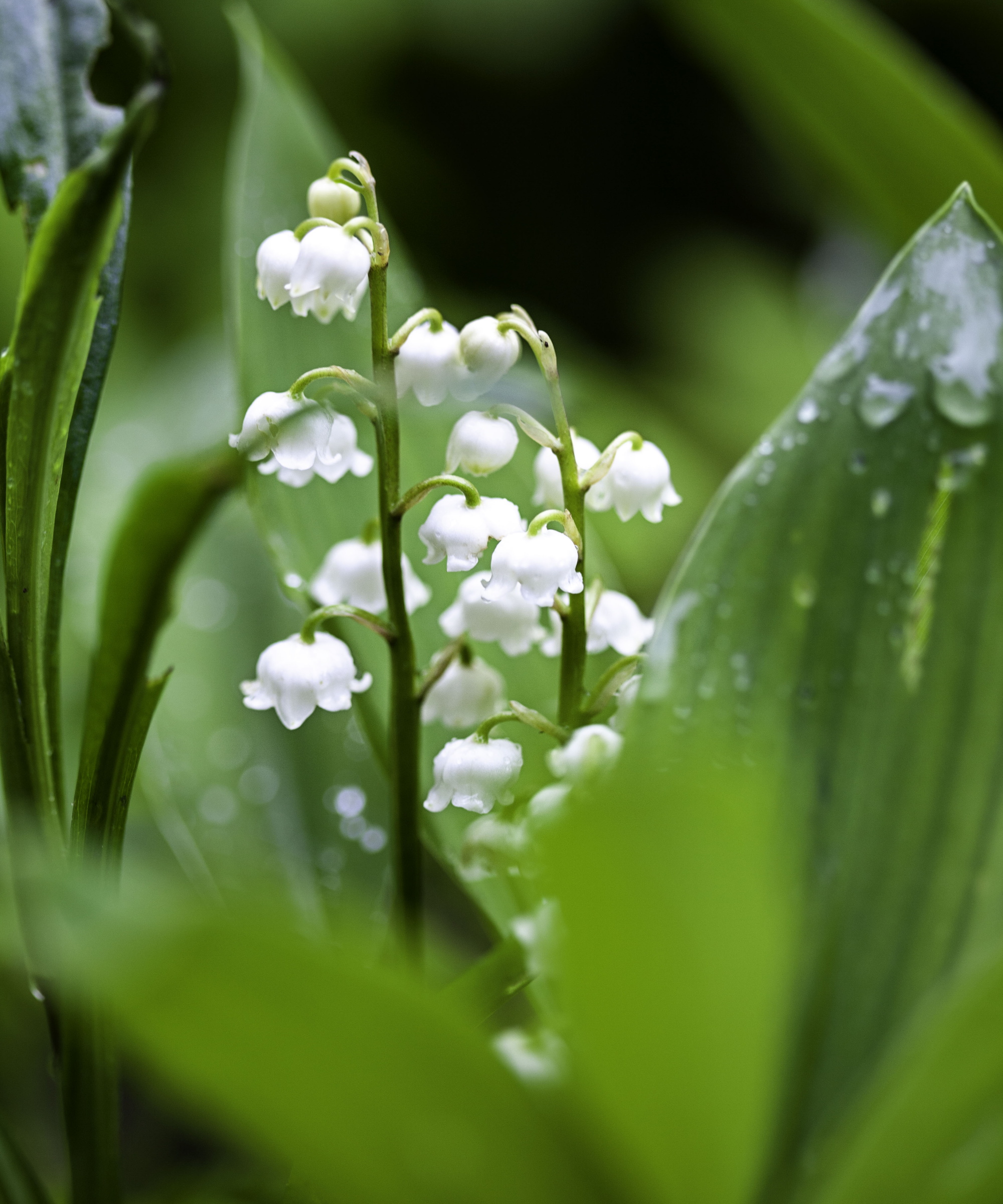
- US hardiness zone: Zone 3 to zone 8
- Flowers in: Spring
- Plant in: You can grow lily of the valley in pots and borders alike by planting bulbs in fall after the ground has cooled.
- Position: Partial to full shade. These are a good choice as plants for under trees or for a container garden in a north-facing yard.

Planting these lily of the valley pips, or rhizomes, is one of the best ways to cover larger shaded areas.
Tips for growing hawthorn
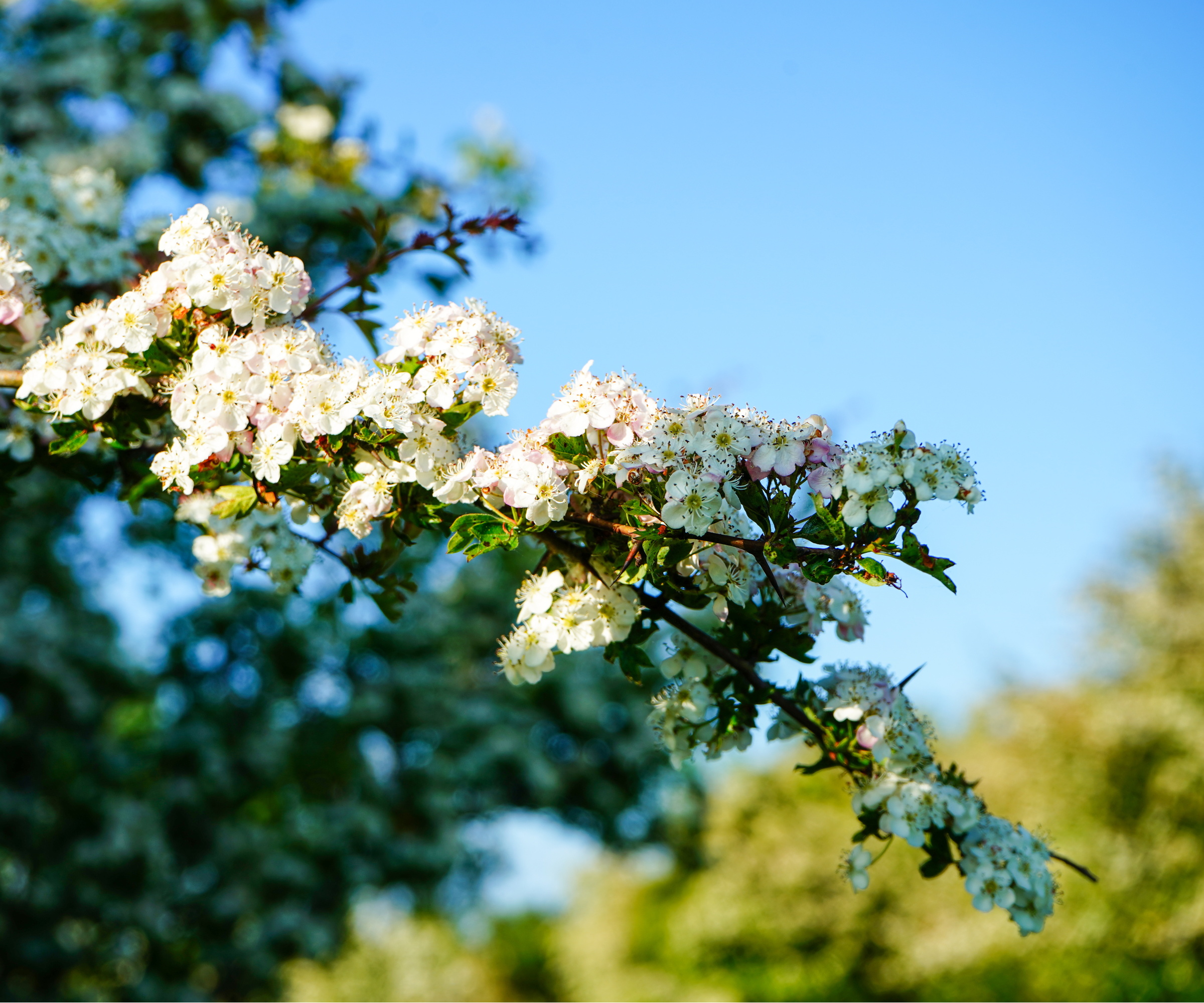
- US hardiness zone: Zone 3 to zone 9
- Flowers in: Spring
- Plant in: The best time to plant trees and shrubs like hawthorn is fall before frost. Familiarize yourself with tree planting mistakes to avoid before planting.
- Position: Part shade to full sun. These trees are versatile and can grow well in a range of positions. To encourage hawthorns to flower, position the shrub somewhere with plenty of sunlight.
June: Honeysuckle and rose
'When growing honeysuckle, you will likely want to set up precautions to keep it
contained to an area, as it can be very invasive,' warns Christen Waddell. 'Many of the best honeysuckles like to climb, so give them a trellis to lift themselves off of the ground,' she suggests.
Similarly, there are plenty of climbing roses to choose from, as well as other beautiful rose varieties growing in a shrub form for a classic summer border. Be aware there are some common rose mistakes to watch out for.
Tips for growing honeysuckle
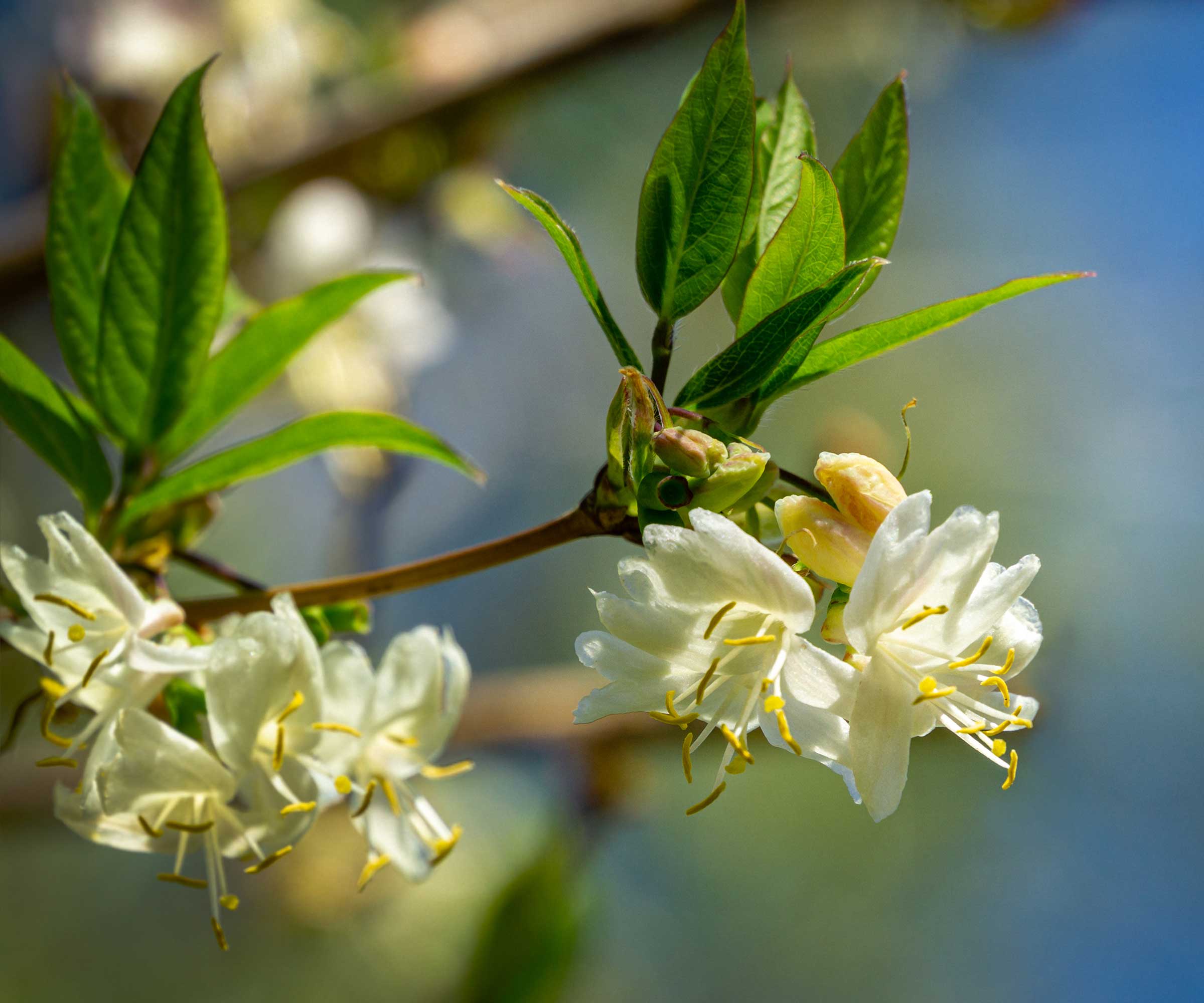
- US hardiness zone: Zone 5 to zone 9
- Flowers in: Summer to early fall
- Plant in: You can grow honeysuckle in pots or the ground. Plant deciduous honeysuckles in winter and evergreen honeysuckles in spring or fall when the ground is cool.
- Position: Partial shade in moist, well-drained soil. Climbing honeysuckles do well in the majority of soil types.
Find a honeysuckle bush at Nature Hills.
Tips for growing roses
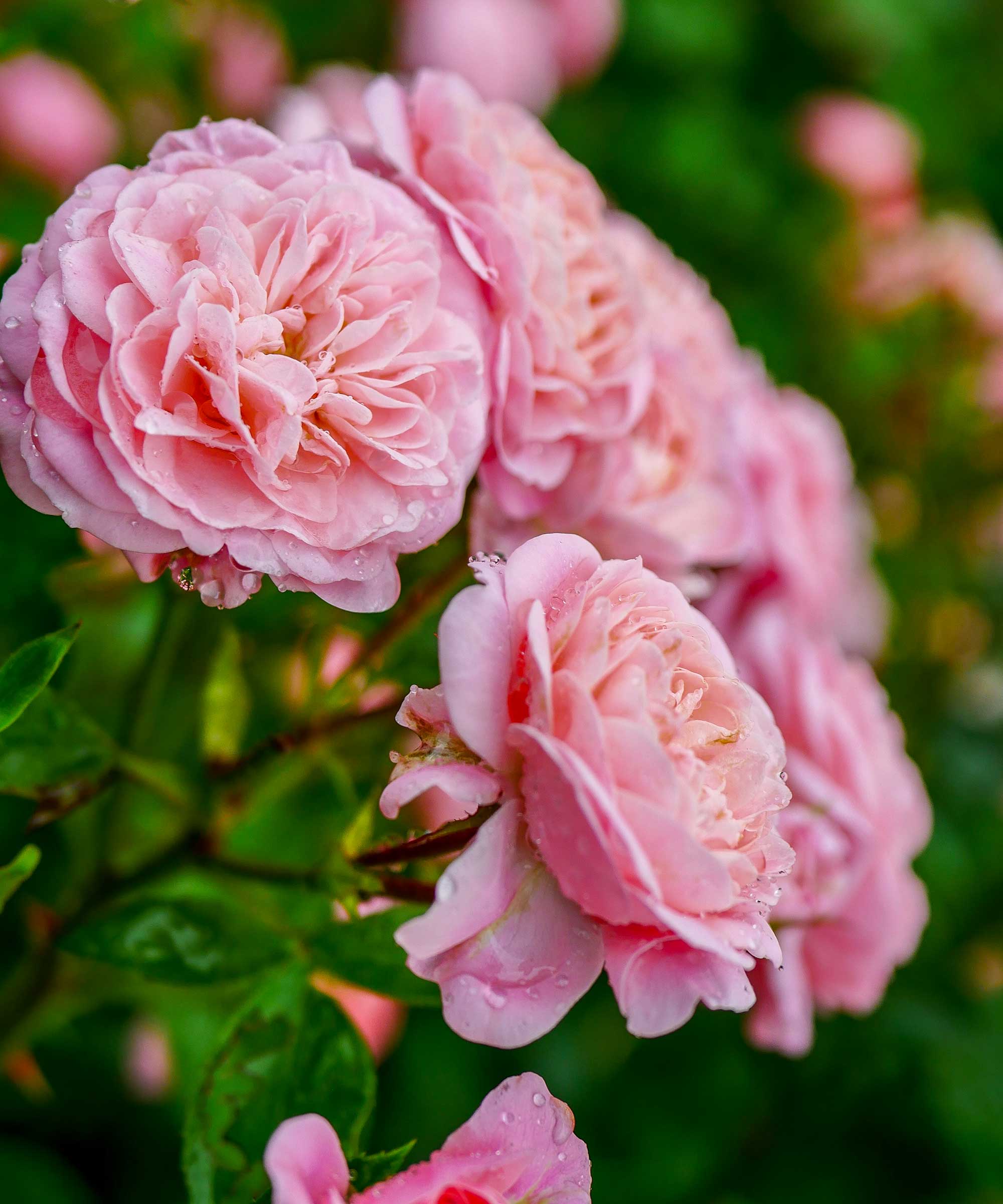
- US hardiness zone: Zone 5 to zone 9
- Flowers in: Late spring to early fall
- Plant in: As a general rule of thumb, plant roses in late fall. Although, it is possible to grow roses in pots at any point in the year.
- Position: Full sun with shelter from strong and cold wind. Opt for well-draining soil to help roses bloom well and ensure they have enough space to grow, as many varieties have a large spread.
Explore the rose bushes available at Nature Hills.
July: Larkspur and waterlily
Larkspur is also known as delphinium, adored for its bright colors and tall spikes of blooms. Larkspur is often the name used to refer to the annual varieties of this plant. They come in blue, purple, white, and even red, adding drama to summer borders.
Meanwhile, waterlilies are the perfect pond plant. They grow from rhizomes in the bottom of the pond, emerging with graceful creamy flowers, often in white and pink hues.
Tips for growing larkspur
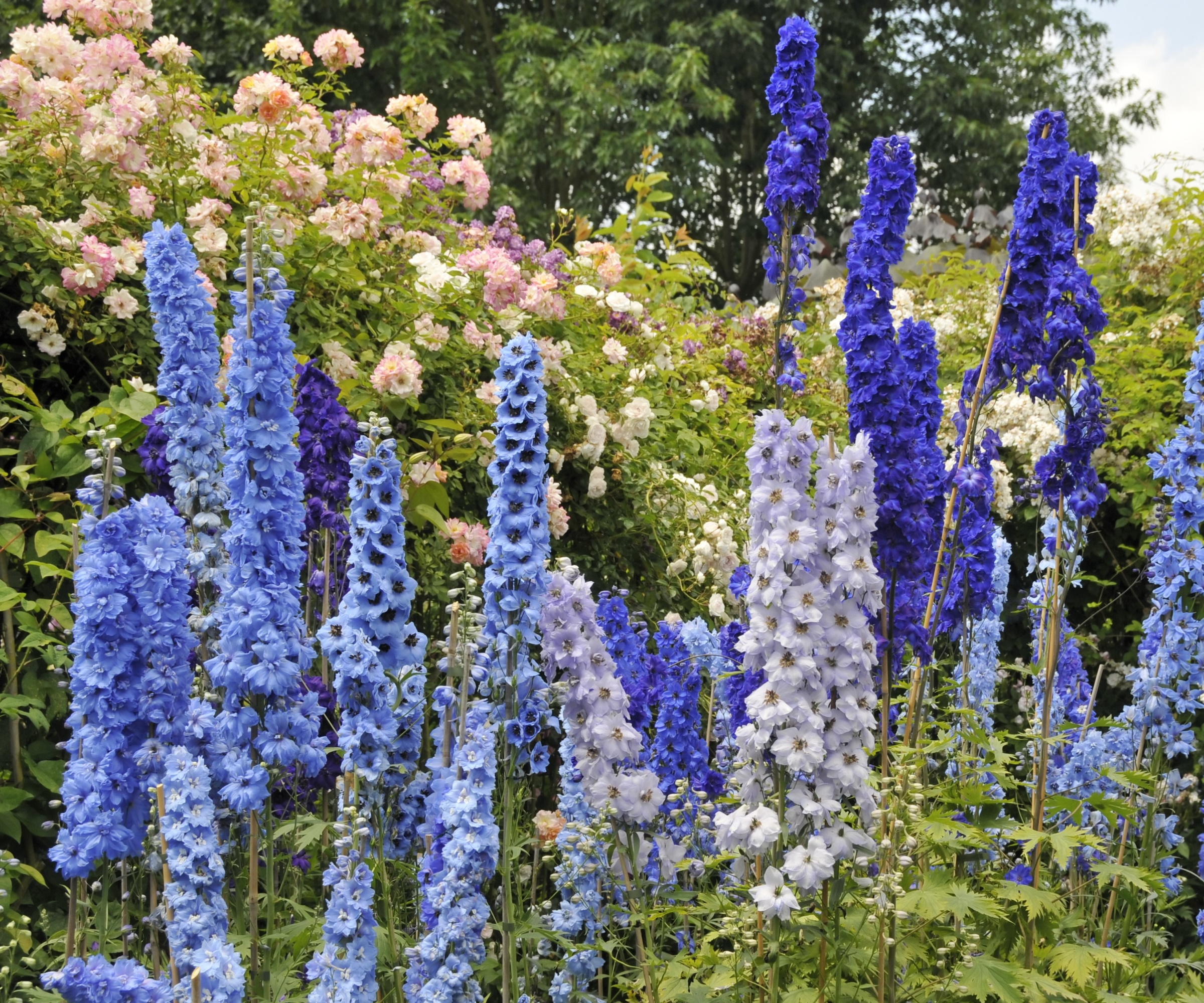
- US hardiness zone: Zone 3 to zone 7
- Flowers in: Summer
- Plant in: Grow delphinium from seed by sowing indoors in early spring. Larkspur varieties can be planted out in spring or fall when the ground has cooled from summer.
- Position: Partial shade to full sun. Keep them sheltered from strong winds and optionally use these plant stakes from Amazon to support their tall spikes, as these are often plants that need staking.
There are lots of delphiniums available at Nature Hills.
Tips for growing waterlilies
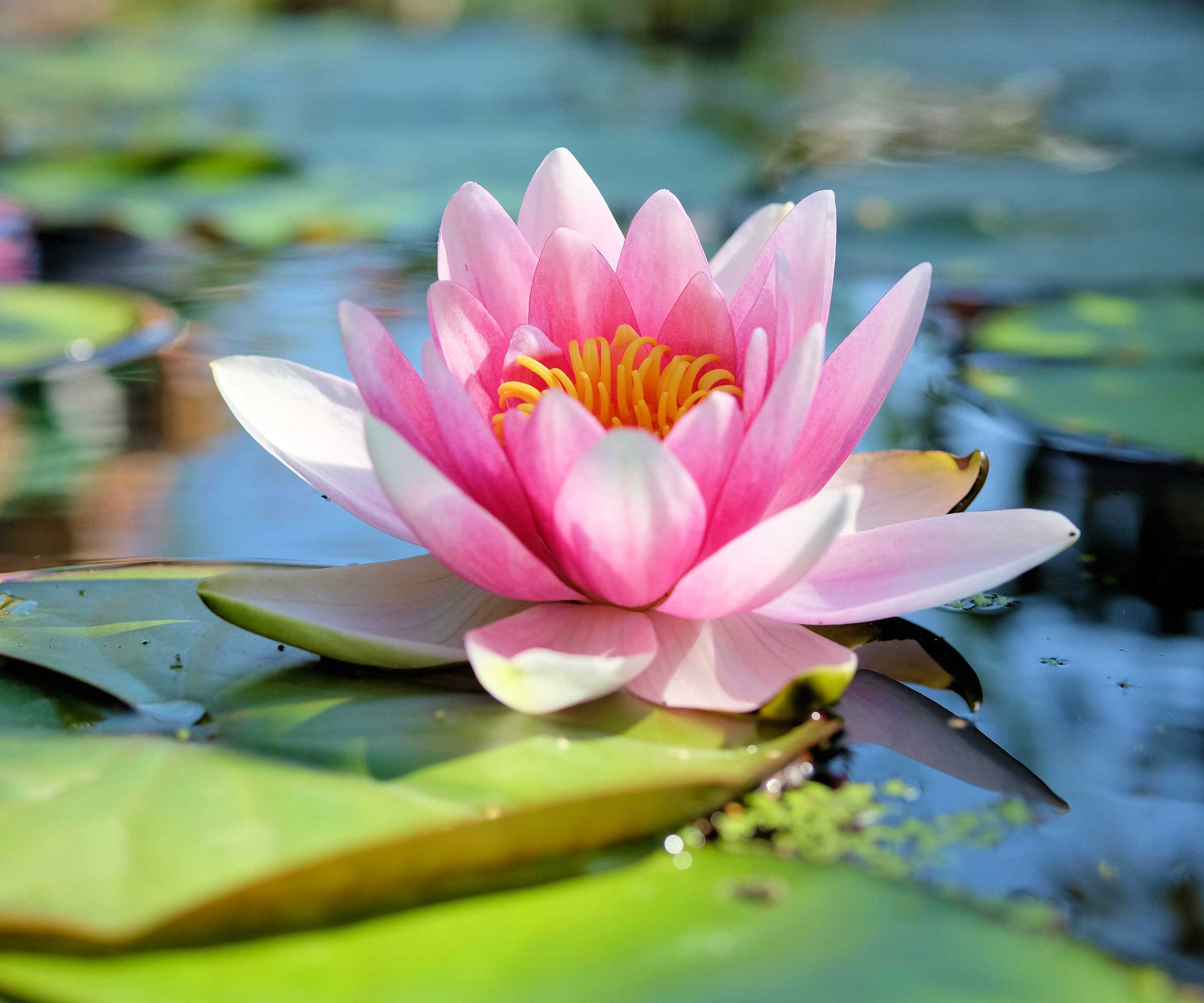
- US hardiness zone: Zone 4 to zone 11
- Flowers in: Summer
- Plant in: These water garden plants should be planted in late spring using aquatic planting baskets (from Amazon).
- Position: Full sun on calm, still water. Garden ponds are perfect for growing waterlilies, provided the pond gets sufficient light levels to promote blooming.
Water lily rhizomes are available at Amazon.
August: Poppy and gladiolus
It may surprise you to learn there are several types of poppies, even some that come in shades of blue. Not only are these easy-to-grow flowers popular for wildflower gardens, but they are also often found in cottage gardens.
Gladiolus is also a sophisticated flower often used in cottage-style planting schemes. It has tall stems adorned with soft blooms of all different colors. There's a type of gladioli for every backyard color palette.
Tips for growing poppies
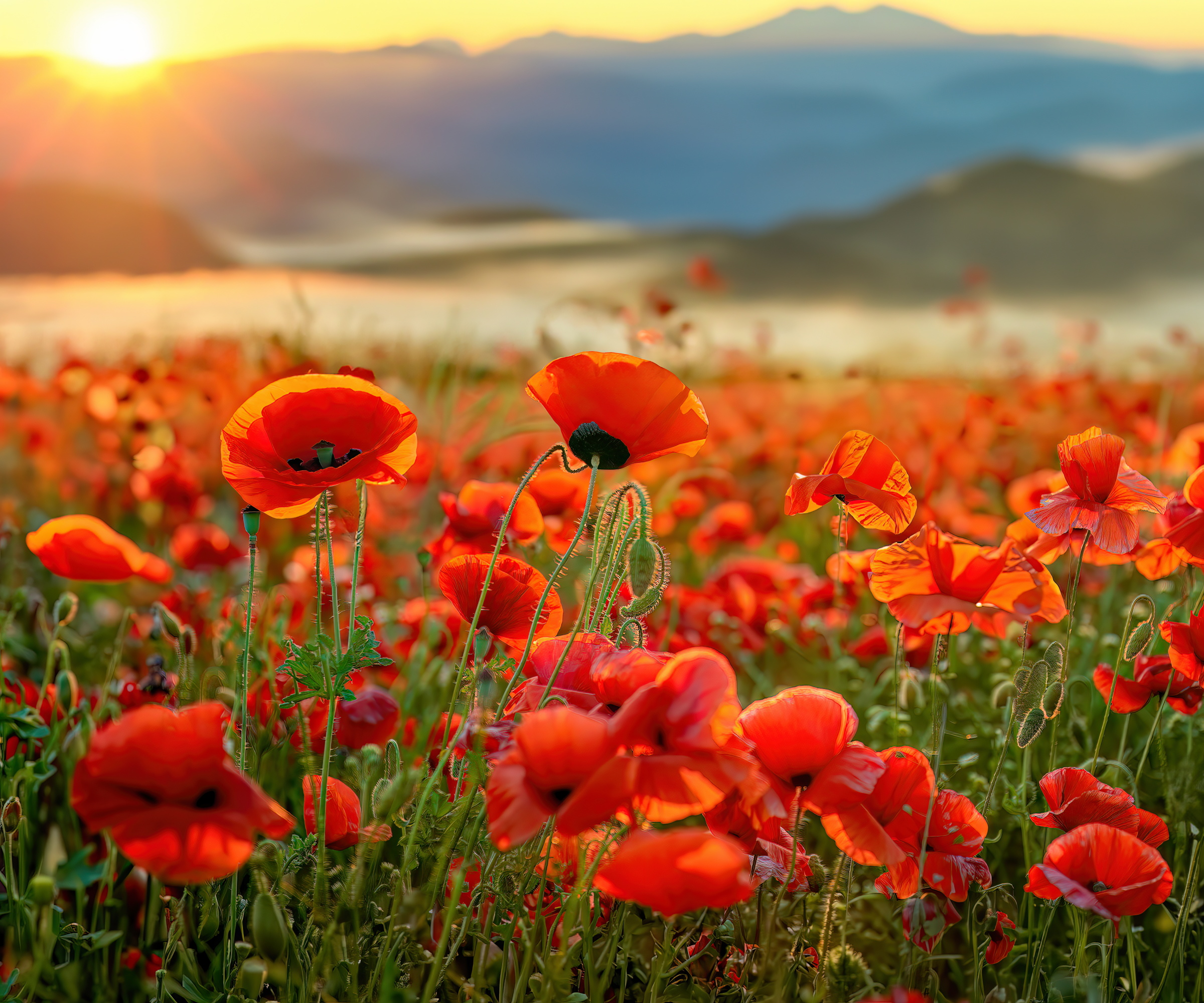
- US hardiness zone: Zone 4 to zone 9
- Flowers in: Spring to summer
- Plant in: Grow poppies by sprinkling seeds directly in your yard during spring or fall. They will self-seed and crop up again in the following year.
- Position: Partial shade to full sun. These are some of the easiest flowers to grow because they will tolerate a range of growing environments. Generally, though, they prefer a sunnier spot in well-draining soil.
Find a poppy flower for your yard at Burpee.
Tips for growing gladiolus
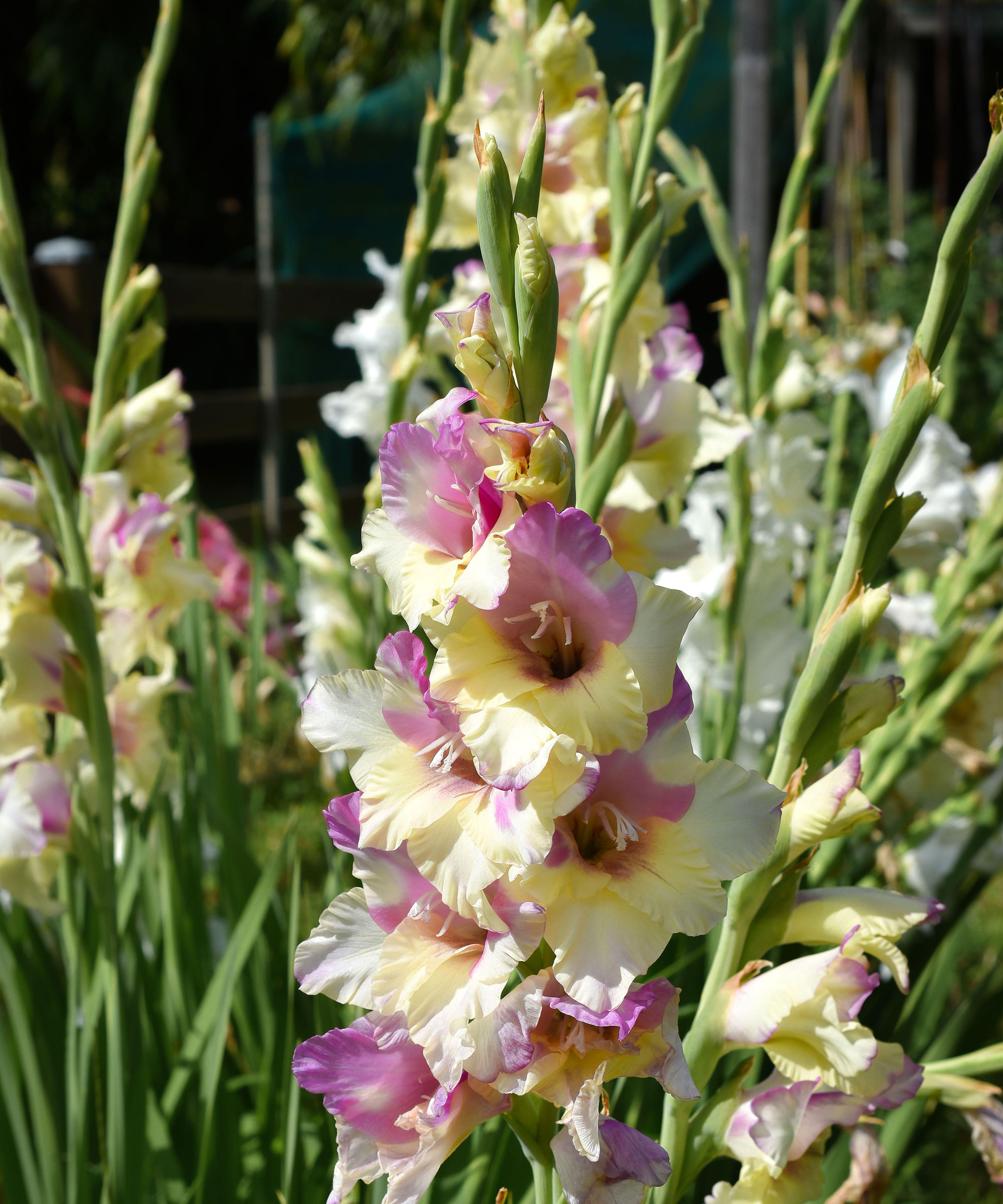
- US hardiness zone: Zone 7 to zone 10
- Flowers in: Summer
- Plant in: Plant gladioli bulbs in spring. You can also grow gladioli in pots by planting in spring after the risk of frost has passed.
- Position: Full sun, open spot. It's best to ensure gladioli isn't surrounded by other plants that may cast shade over them, and ensure they are growing in well-draining, slightly acidic soil. You can use this soil test kit from Amazon to identify the pH and nutrient levels in your soil.
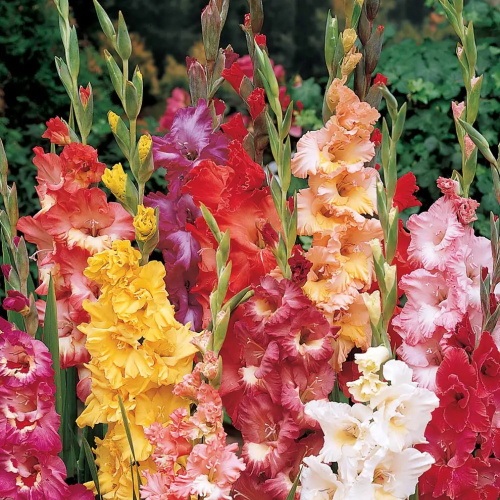
16 bulbs of a unique and lovely gladiolus variety with large, ruffled flowers in soft pastel colors.
September: Aster and morning glory
With plenty of aster varieties to choose from, you can also grow climbing asters on a trellis or pergola. They have daisy-like blooms which are a stunning choice for plants for fall color. These perennials are also popular with pollinators, so they're a valuable plant to grow in a garden for pollinators.
Morning glory is also a special plant, earning its name from the fact it opens it's delicate blooms early in the morning before they close again in the afternoon. These annual climbing plants can be grown up a house, trellis, or a pergola roof, too.
Tips for growing asters
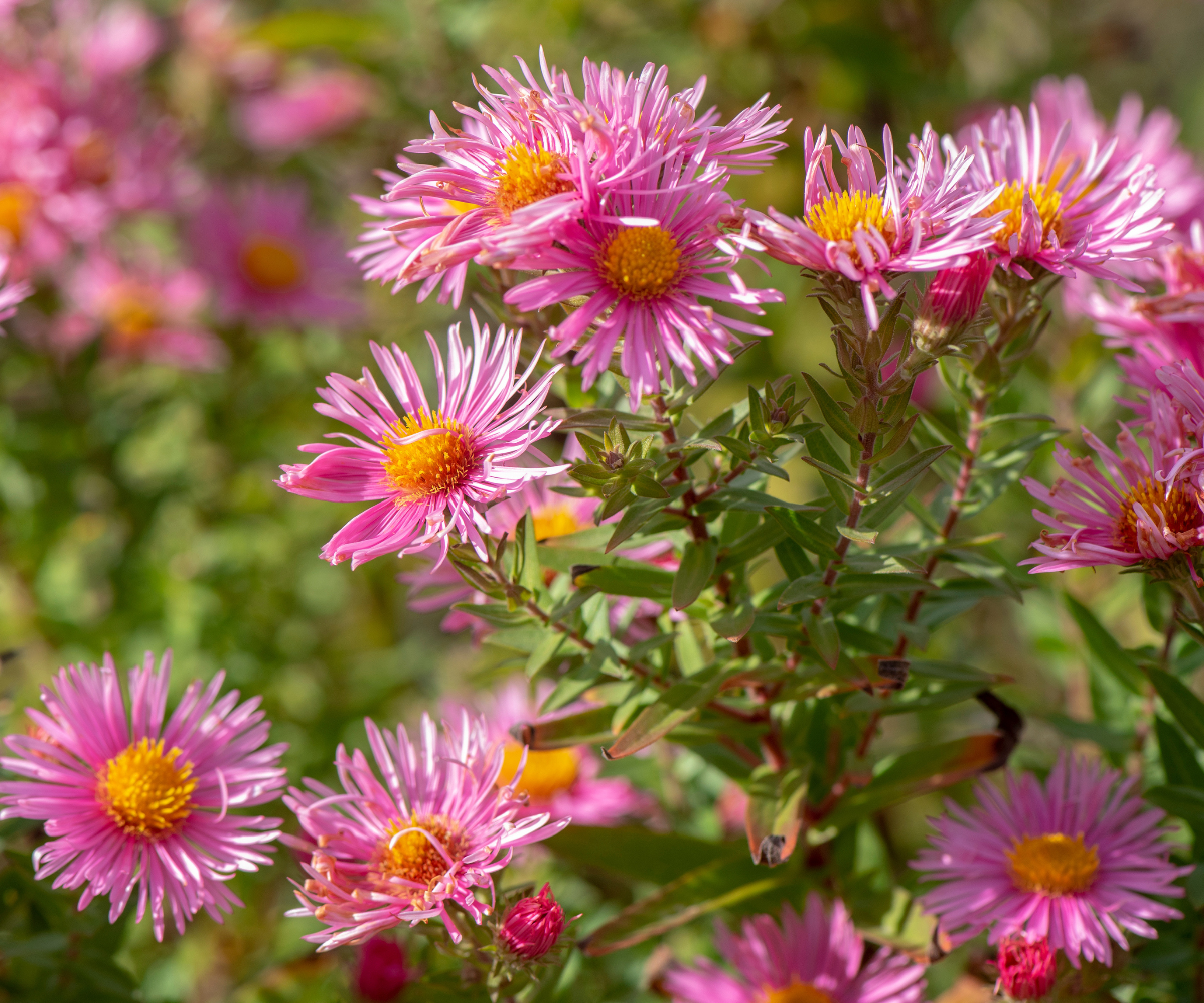
- US hardiness zone: Zone 3 to zone 8
- Flowers in: Late summer to fall
- Plant in: Sow aster seeds indoors in early spring and plant out after threat of late frost has passed. When sowing flower seeds, take care to avoid seed sowing mistakes.
- Position: Full sun is optimal. However, asters will tolerate light shade. They're perfect for growing in pots, so long as their soil is maintained at a consistent moisture level and not left to dry out.
Explore the asters available at Nature Hills.
Tips for growing morning glory
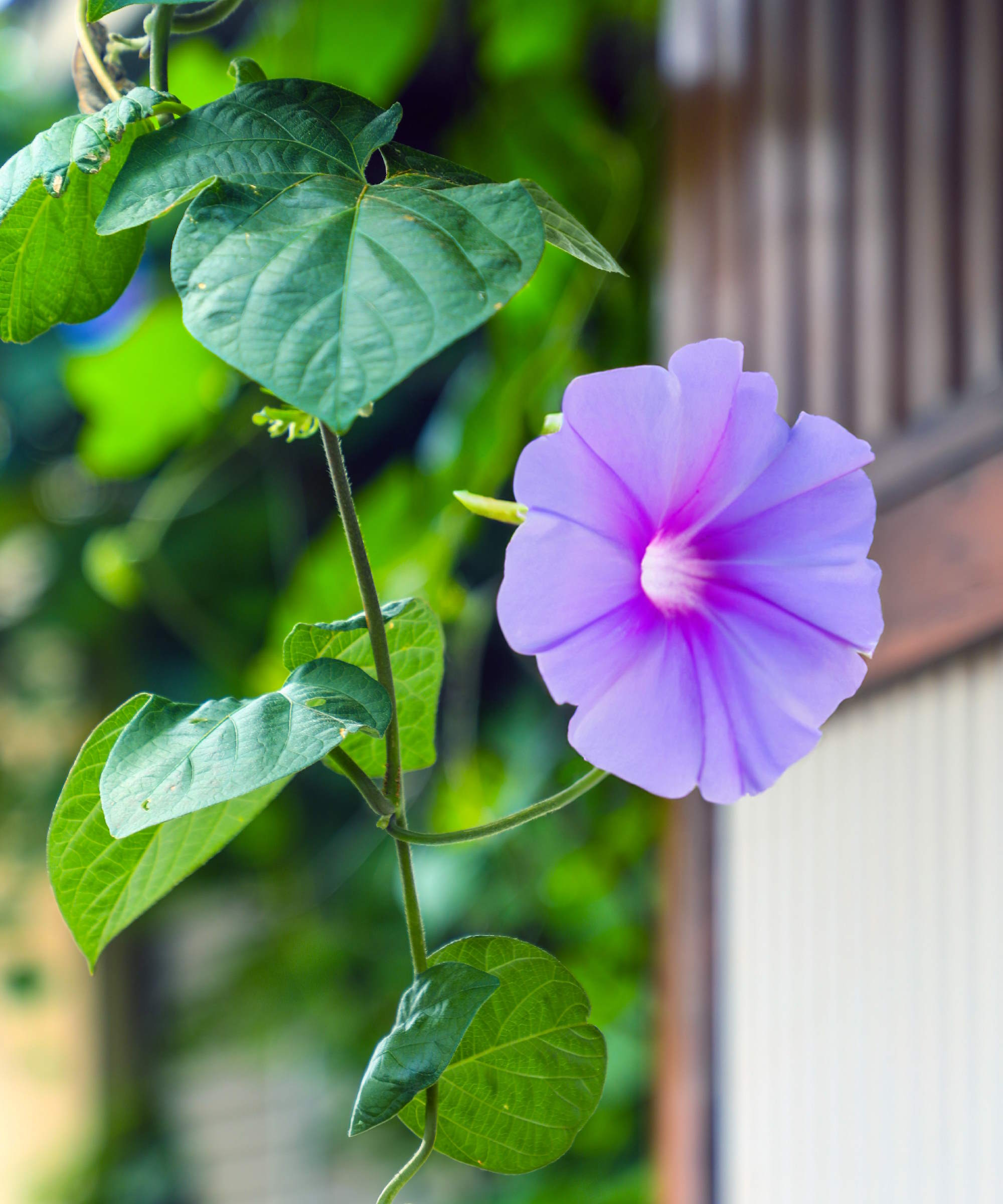
- US hardiness zone: Zone 2 to zone 11
- Flowers in: Mid to late summer
- Plant in: Grow morning glory from seed, sowing them in indoors around four to six weeks before the last frost in spring. They can then be planted out after the last frost.
- Position: Full sun for flowers to open. They do best with six to eight hours of sun a day, thriving in moist but well-draining soil.
October: Cosmos and marigold
Available in a range of colors, there are both annual and perennial cosmos varieties. You can keep cosmos blooming by deadheading through its flowering season as its blooms fade. They're likely to self-seed if left alone, too, so you might spot some new cosmos growing in your yard the following year.
Marigolds are also a valuable addition to the yard: 'They will bush out and fill an area quite nicely, and they can handle being planted more thickly as well,' says Christen Waddell. Not only this, but you can plant marigolds in a vegetable garden to repel pests that can't stand the scent these flowers give off.
Tips for growing cosmos
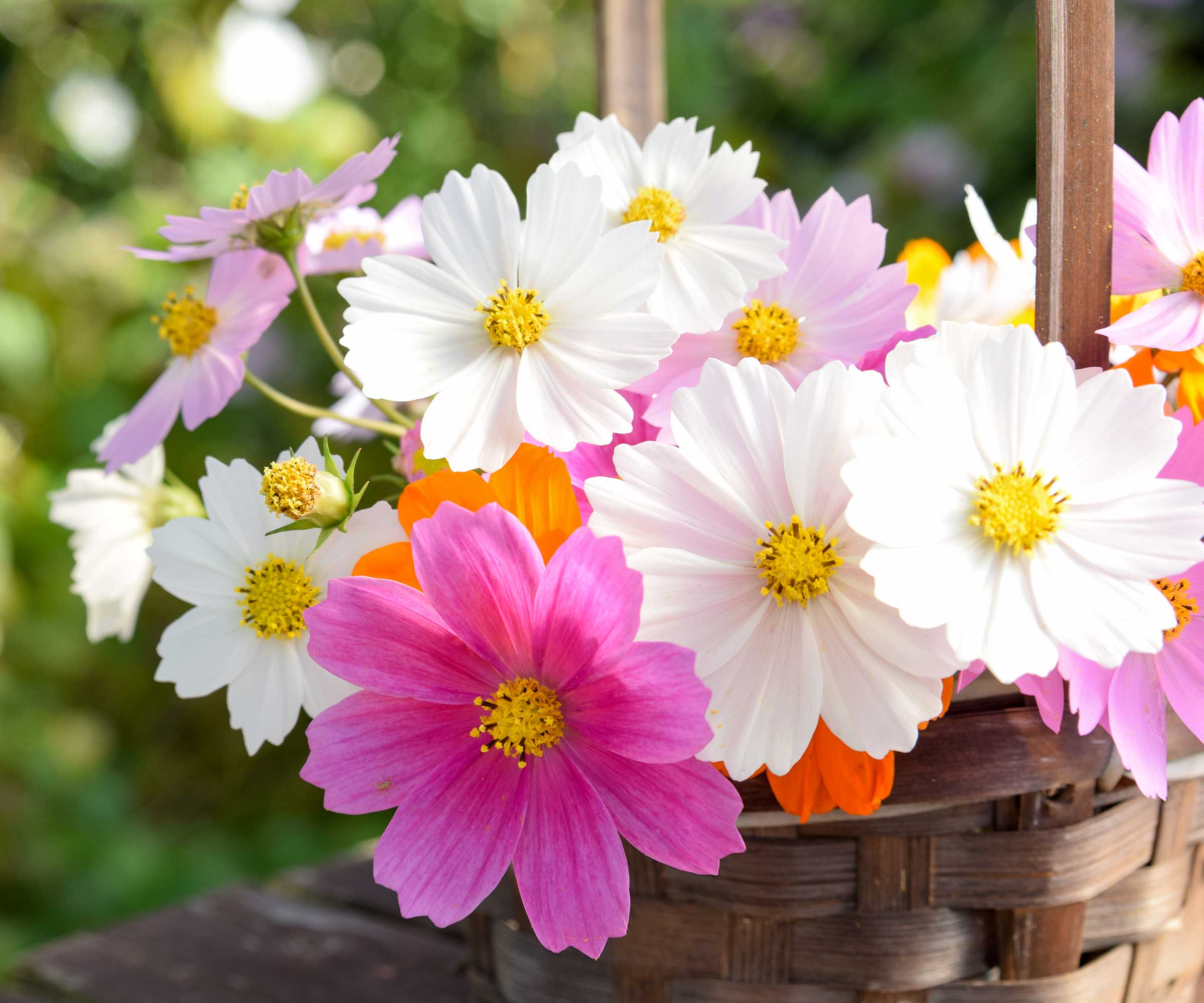
- US hardiness zone: Zone 7 to zone 11
- Flowers in: Mid summer to fall
- Plant in: Grow cosmos flowers by sowing seeds indoors in early spring, or directly in the ground in late spring when the late frosts have passed.
- Position: Full sun in well-drained soil. Insufficient light levels can cause leggy growth. They work especially well in pots and can make a great thriller in thriller, filler, spiller containers.
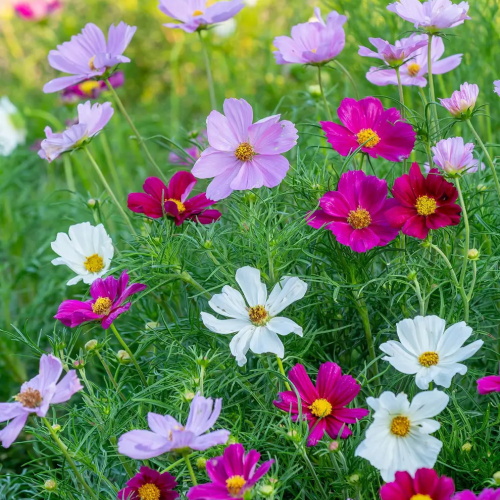
Plant these 50 seeds of cosmos for a mix of white, rose, pink, and cherry flowers.
Tips for growing marigolds
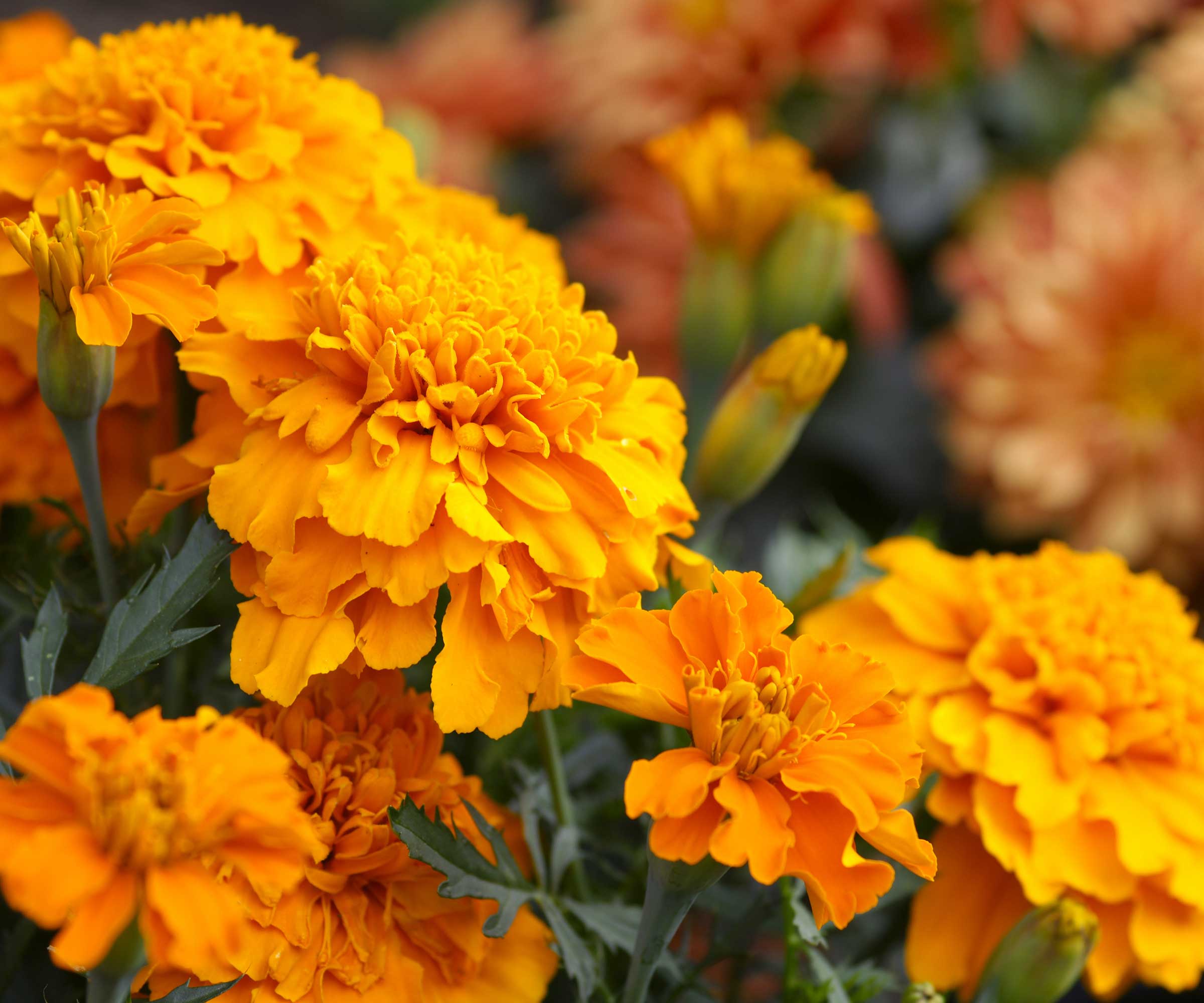
- US hardiness zone: Zone 2 to zone 11
- Flowers in: Late spring to fall
- Plant in: Grow marigolds by starting marigold seeds indoors in early spring. You can then plant marigolds outdoors once frost has passed and the ground has warmed up.
- Position: Full sun, but tolerant of partial shade. They tolerate drought, heat and, humidity. You might also choose to grow marigolds in a vegetable greenhouse to help keep pests at bay.
Marigold seeds are available an Amazon.
November: Chrysanthemum and peony
Chrysanthemums are arguably the most popular fall flower thanks to their fall hues of orange, red, and yellow. How long chrysanthemums last depend on when they're grown. Early-flowering mums can be enjoyed from September into October, while late-flowering mums bloom generally through October and sometimes into November.
Peonies show off their display much earlier in the year, at their peak during summer. They have long been associated with love and even earned the title of Flower of the Year in 2024. They are prone to flopping over, but luckily there are plenty of ways to support peonies.
Tips for growing chrysanthemums
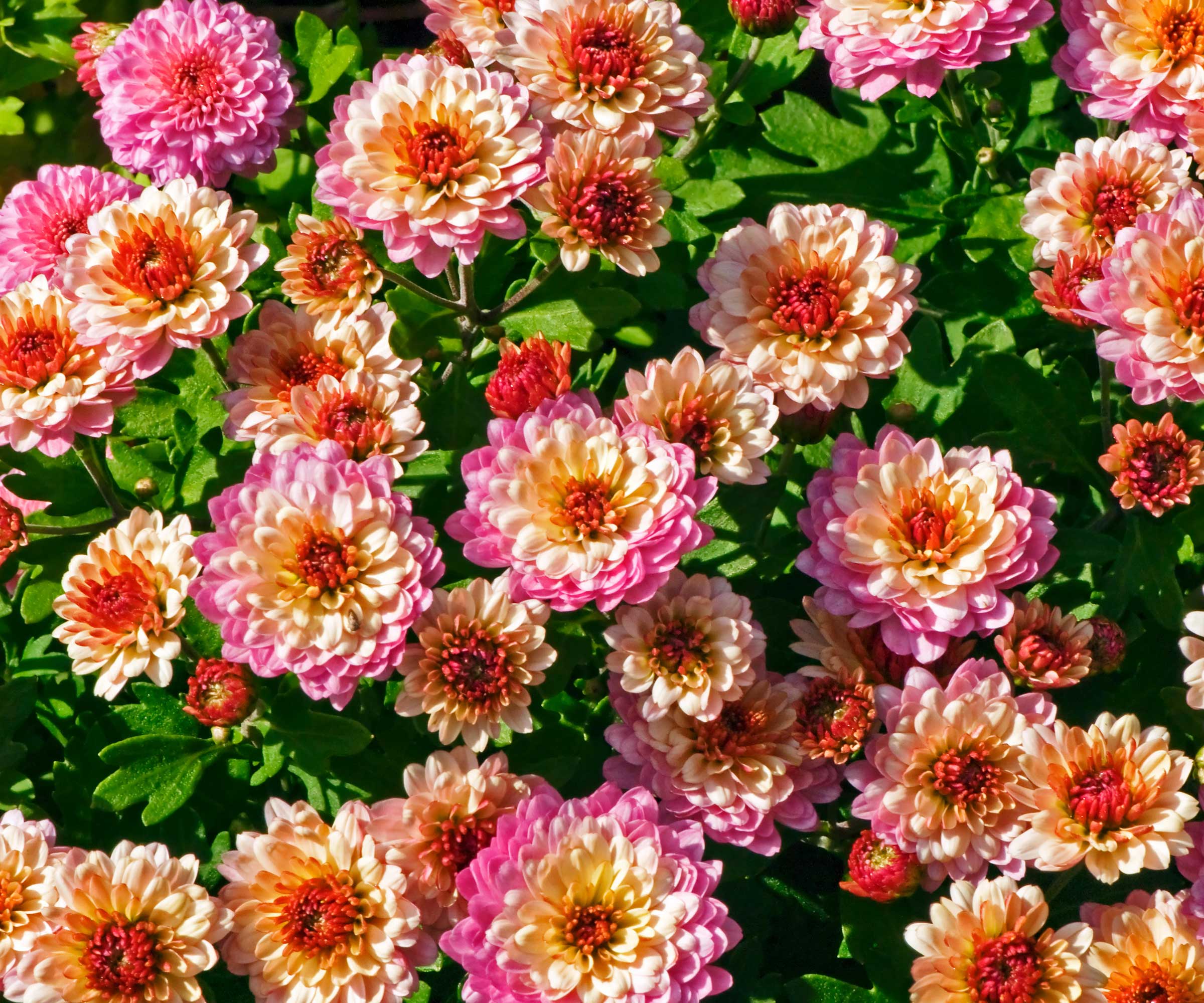
- US hardiness zone: Zone 5 to zone 9
- Flowers in: Fall
- Plant in: It's easy to grow chrysanthemums by planting them out in late spring, after the risk of late frosts has passed. It's also very easy to propagate chrysanthemums from cuttings.
- Position: Full sun with shelter from strong winds. Chrysanthemums work well in a sunny border, but they're also popular choices for a fall planter. Opt for well-draining, fertile soil for for best blooming results.
For ultimate fall color, plant these Chrysanthemum Matchstick seeds from Burpee.
Tips for growing peonies
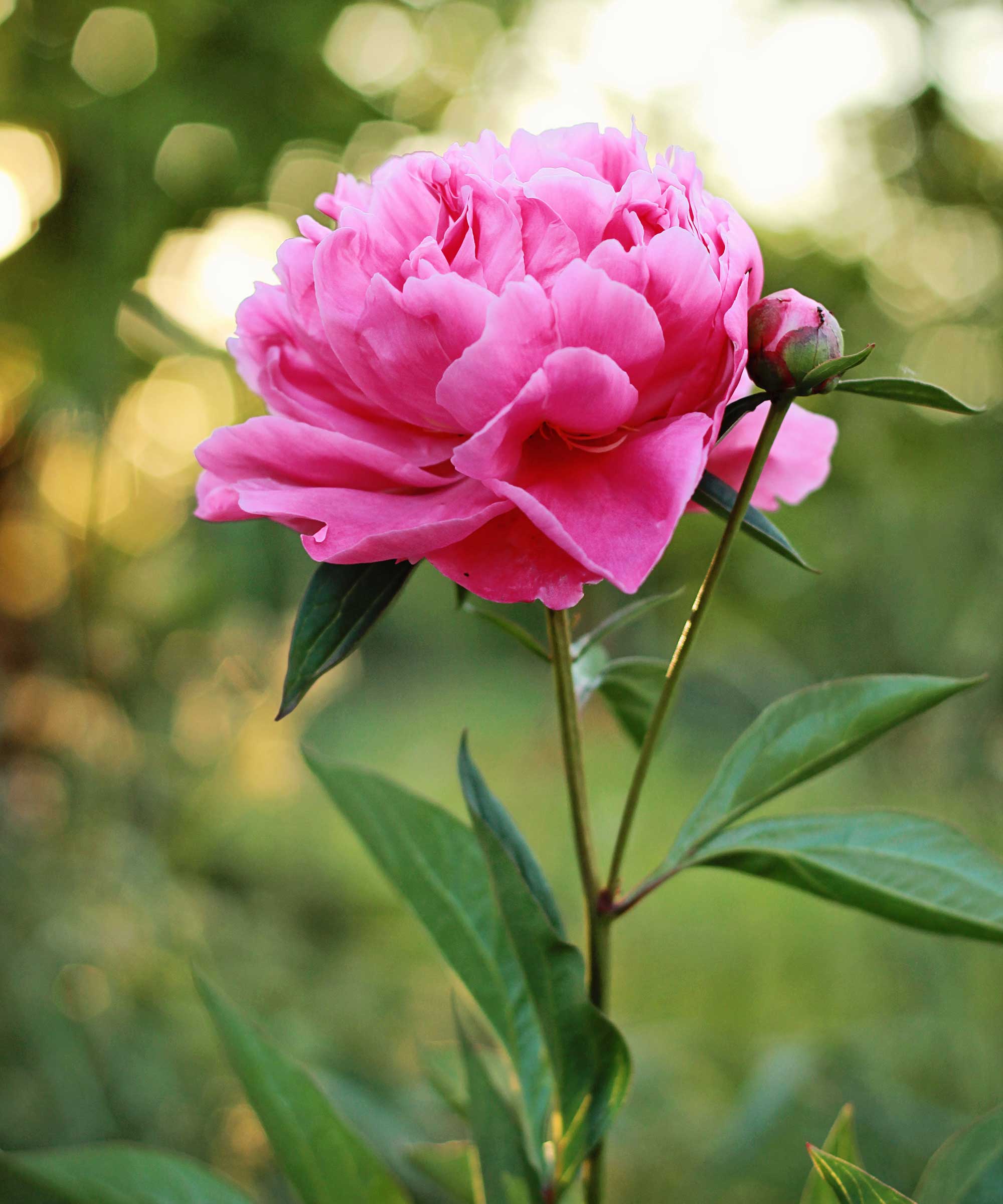
- US hardiness zone: Zone 3 to zone 8
- Flowers in: Mid spring to summer
- Plant in: When to grow peonies depends on the type you're growing. Herbaceous peonies and tree peonies should be planted between October and March, while peonies in pots should be planted in spring.
- Position: Full sun, tolerant of partial shade. These sun-lovers thrive in a spot where they get lots of sunlight, but will still grow well in partial shade. They should be grown in a sheltered position where possible.
December: Holly and narcissus
Not only is holly a popular shrub for its winter berries, it also has uses as a pest-repellent plant and an evergreen shrub providing year-round interest. Its spring and summer flowers are lesser known, but appear as tiny, delicate white blooms.
It may be surprising for narcissus to be a December birth month flower, considering this group of plants (including daffodils) tend to bloom in spring, but paperwhite narcissus is often grown as an indoor bulb to force for Christmas. With so many types of narcissus, there's certainly one for every yard.
Tips for growing holly
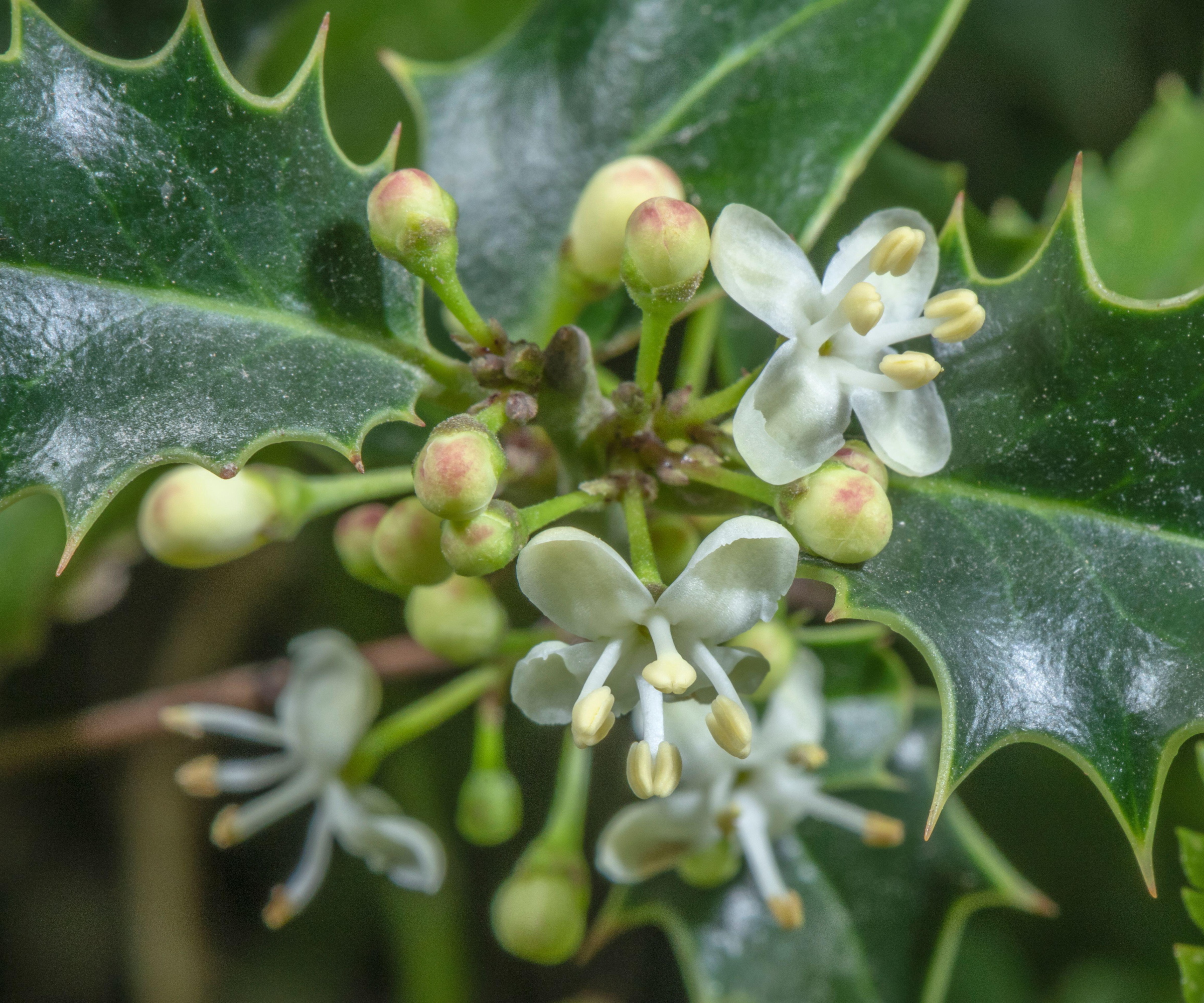
- US hardiness zone: Zone 5 to zone 11
- Flowers in: Spring to summer. Berries from late fall to winter.
- Plant in: To grow holly, it's best to plant when the weather is milder in spring or fall. Although, you can plant holly in pots all year round.
- Position: Full sun to partial shade. In spring and summer, holly shrubs are more likely to bloom when they are receiving plenty of sunlight.
Explore the holly bushes available at Nature Hills.
Tips for growing narcissus
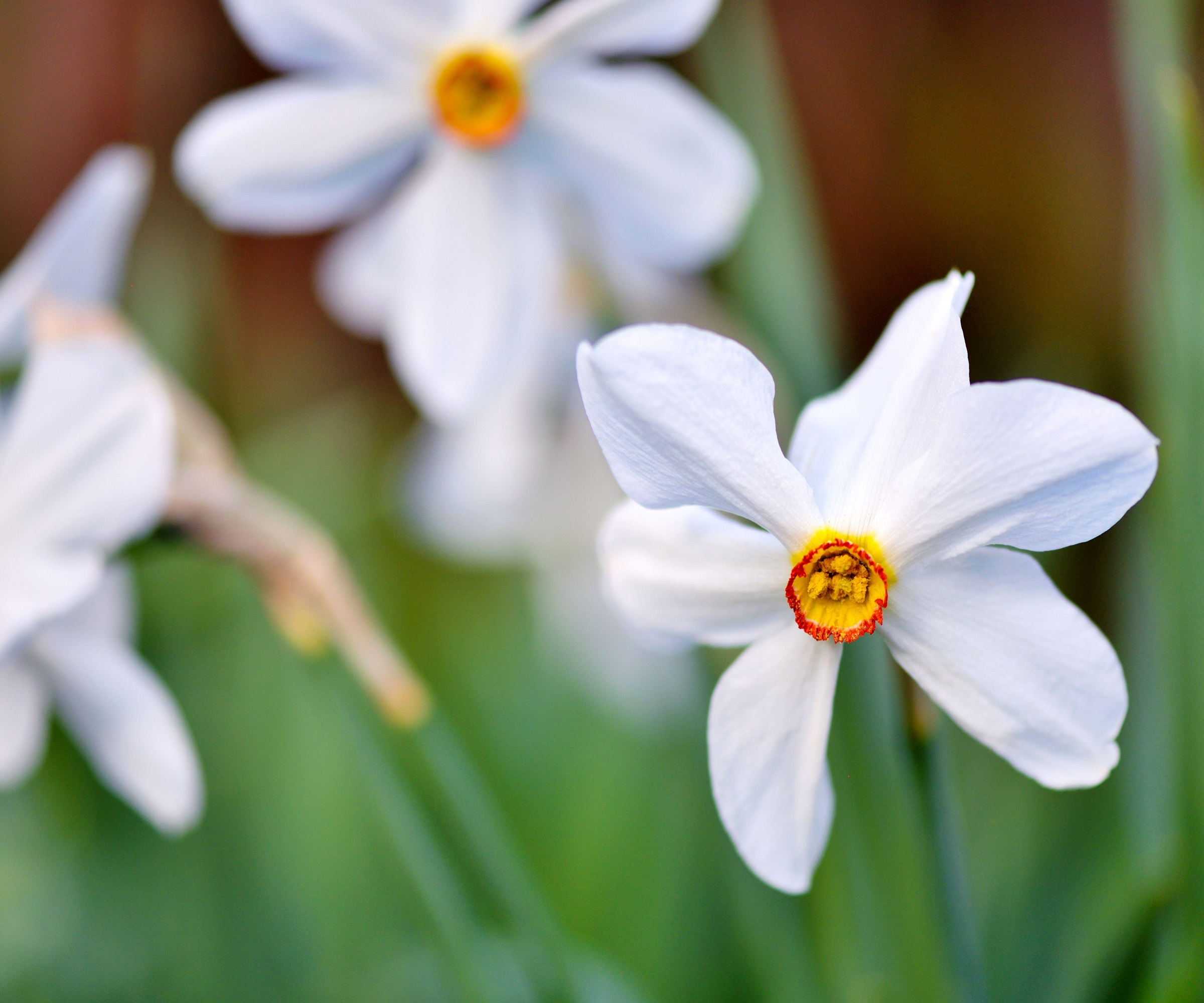
- US hardiness zone: Zone 3 to zone 9
- Flowers in: Spring
- Plant in: Plant bulbs of narcissus flowers in early fall or plant potted narcissus bulbs in spring before they bloom. This will give them sufficient time to put roots down before flowering.
- Position: This will depend on the type of narcissus you are growing. Generally speaking, however, narcissus plants prefer a sunny spot for bright blooms. It's best to grow them in a well-draining soil.
If you're keen to learn to experiment with forcing bulbs in water, try using these narcissus paperwhite bulbs from Amazon.
FAQs
Do birth month flowers bloom in the month they're associated with?
Generally speaking, the majority of birth month flowers bloom in the month they represent. However, this isn't always the case - for example, peony is a November birth month flower but it tends to bloom during spring and summer. There are also the factors of region and hardiness zone that impact when birth month flowers bloom. If you're keen to grow your own birth month flower, make sure to research when it needs to be planted and when it will bloom in your local climate.
Each one of the 24 birth month flowers is special in their own way. Whether you choose to plant them in your yard or grow them to gift to loved ones, incorporating birth month flowers in your yard makes for a unique addition to flower gardens.
Before you get planting, make sure to do some planning and read up on resources like our guide to when to start planting flowers for spring and which plants you shouldn't deadhead to ensure growing success.
Sign up to the Homes & Gardens newsletter
Design expertise in your inbox – from inspiring decorating ideas and beautiful celebrity homes to practical gardening advice and shopping round-ups.

Tenielle is a Gardens News Writer at Homes & Gardens. She holds a qualification in MA Magazine Journalism and has over six years of journalistic experience. Before coming to Homes & Gardens, Tenielle was in the editorial department at the Royal Horticultural Society and worked on The Garden magazine. As our in-house houseplant expert, Tenielle writes on a range of solutions to houseplant problems, as well as other 'how to' guides, inspiring garden projects, and the latest gardening news. When she isn't writing, Tenielle can be found propagating her ever-growing collection of indoor plants, helping others overcome common houseplant pests and diseases, volunteering at a local gardening club, and attending gardening workshops, like a composting masterclass.
-
 Plants never to grow next to fruit trees
Plants never to grow next to fruit treesExpert advice on which plants to keep away from fruit trees to encourage a healthy harvest
By Jacky Parker Published
-
 Martha Stewart's tips for arranging daffodils are unbelievably simple and effective – it's the only flower advice you need this springtime
Martha Stewart's tips for arranging daffodils are unbelievably simple and effective – it's the only flower advice you need this springtimeMartha shows us that we can create gorgeous bouquets of this seasonal flower by simply trimming the stems and placing them in specific vases
By Hannah Ziegler Published
